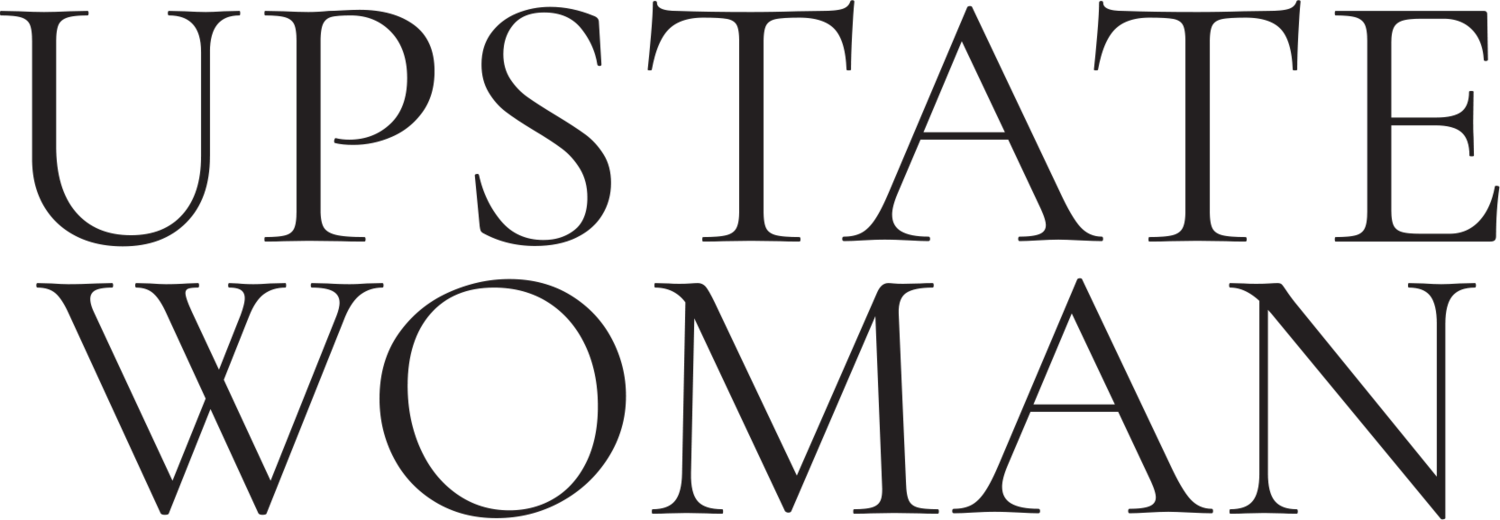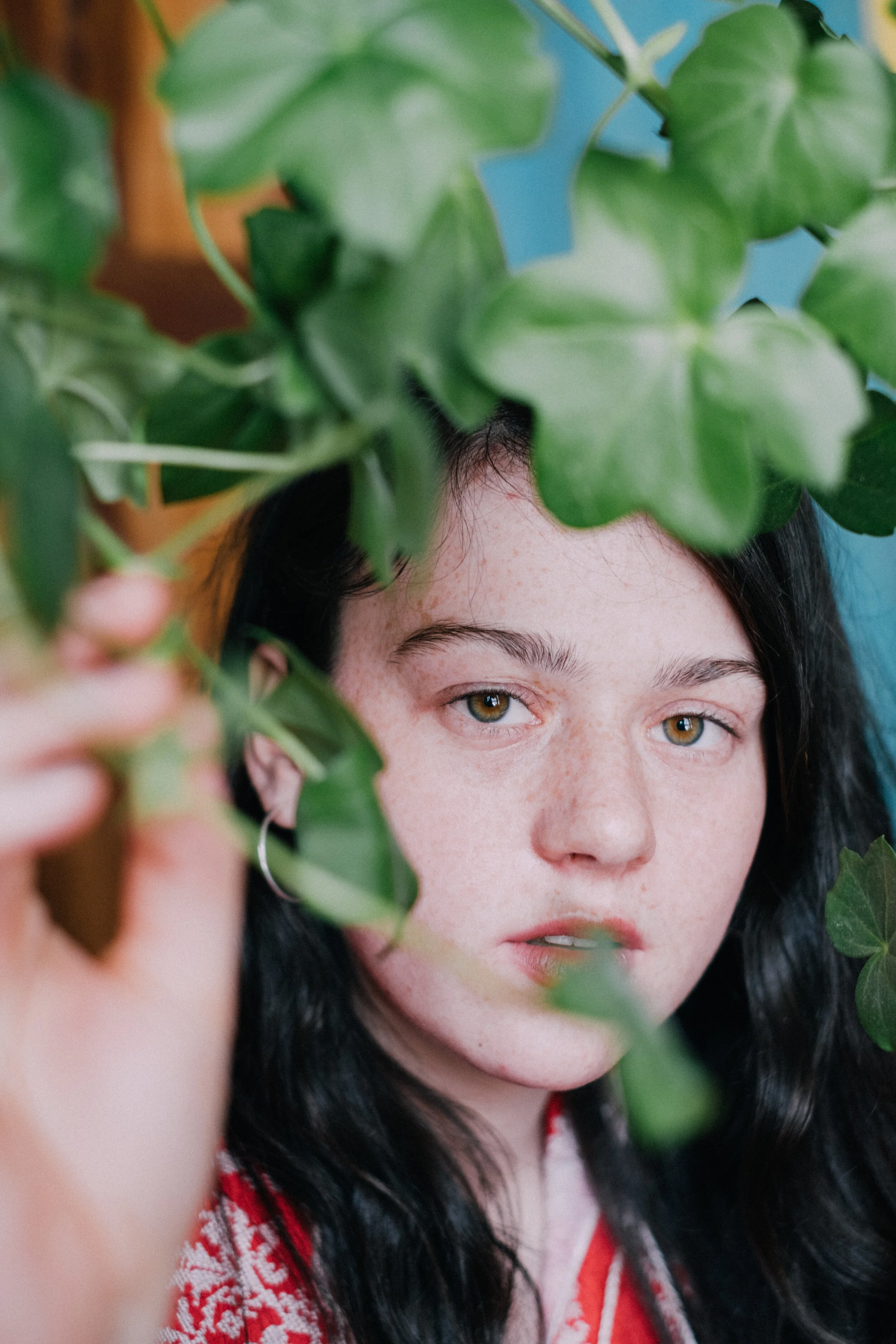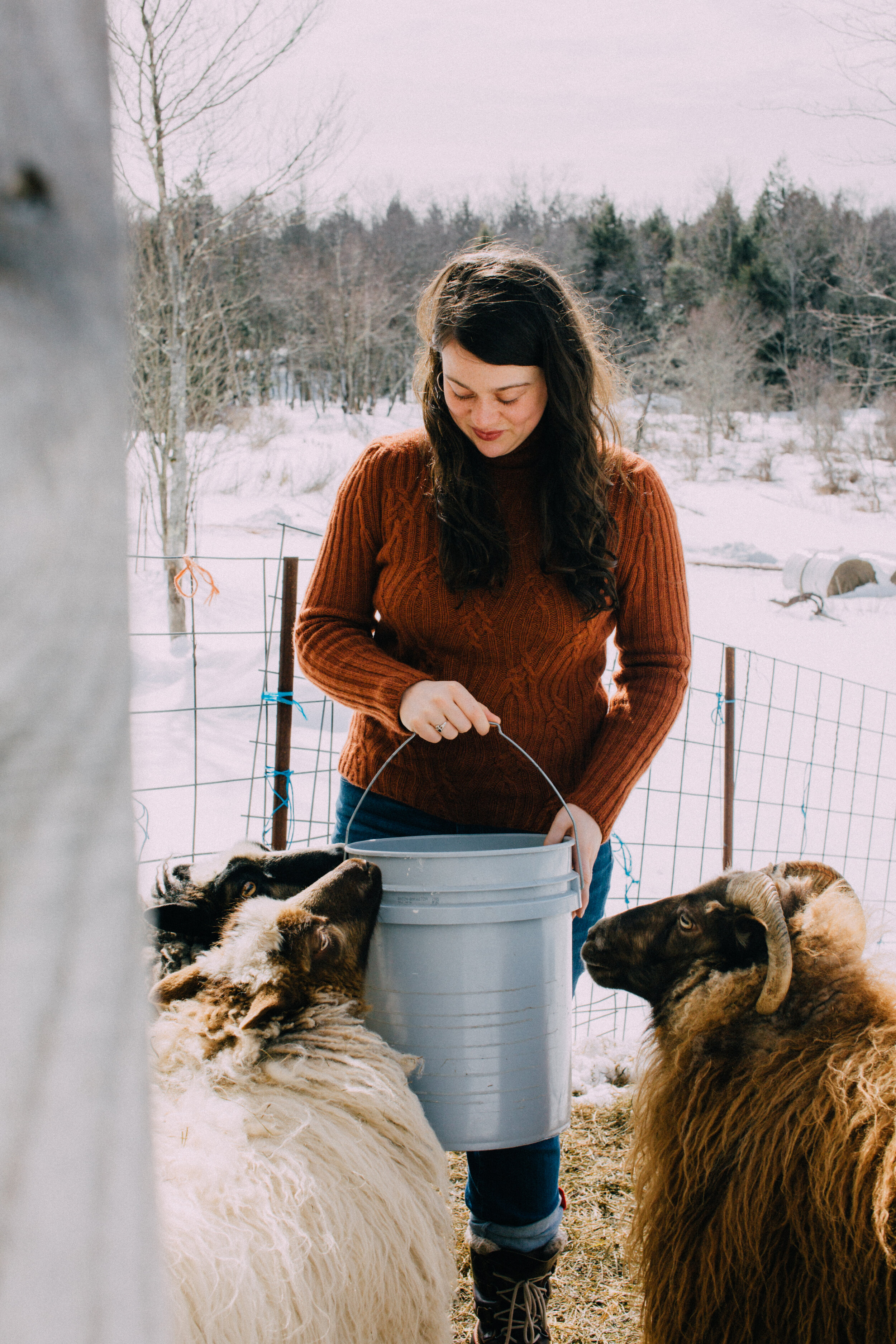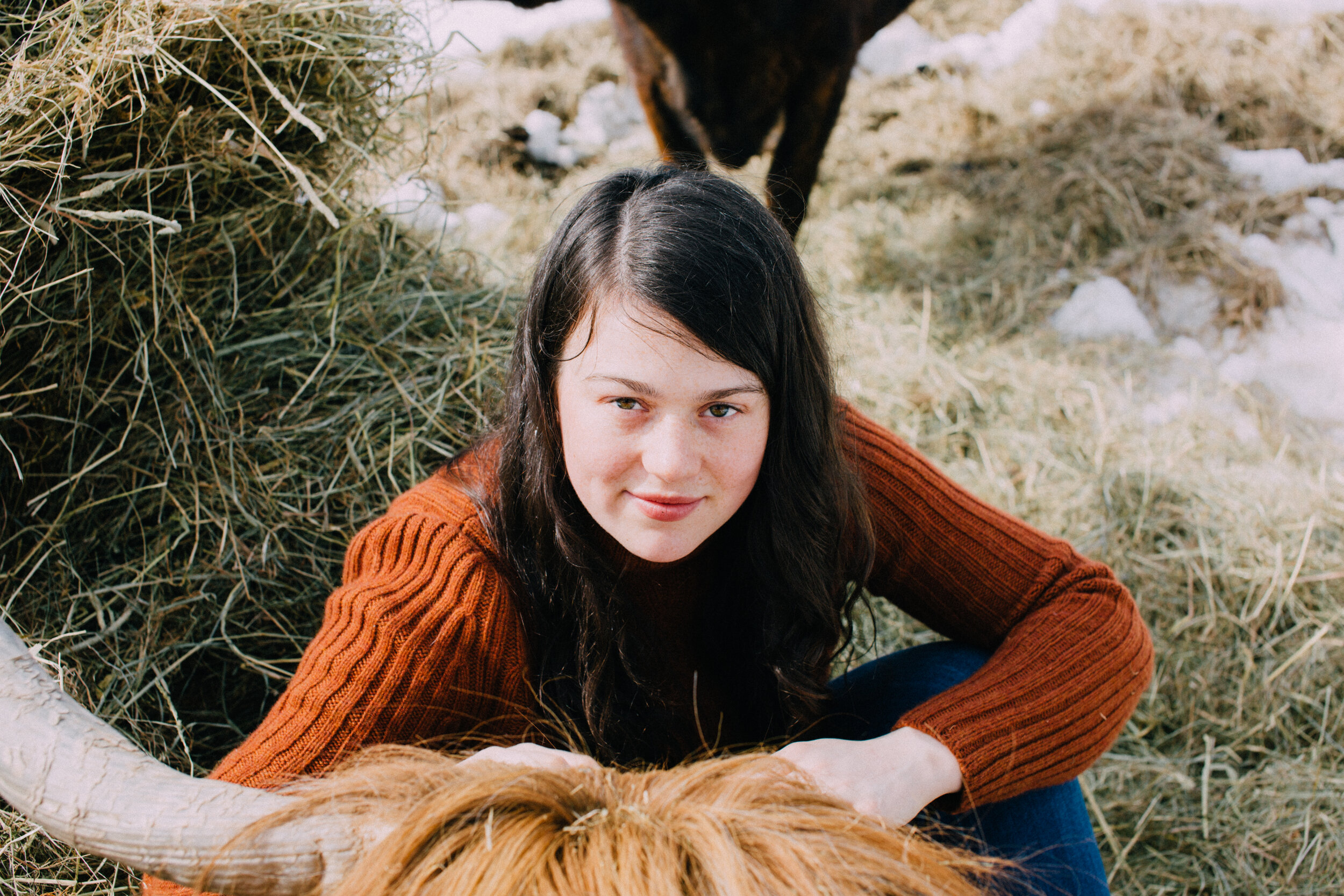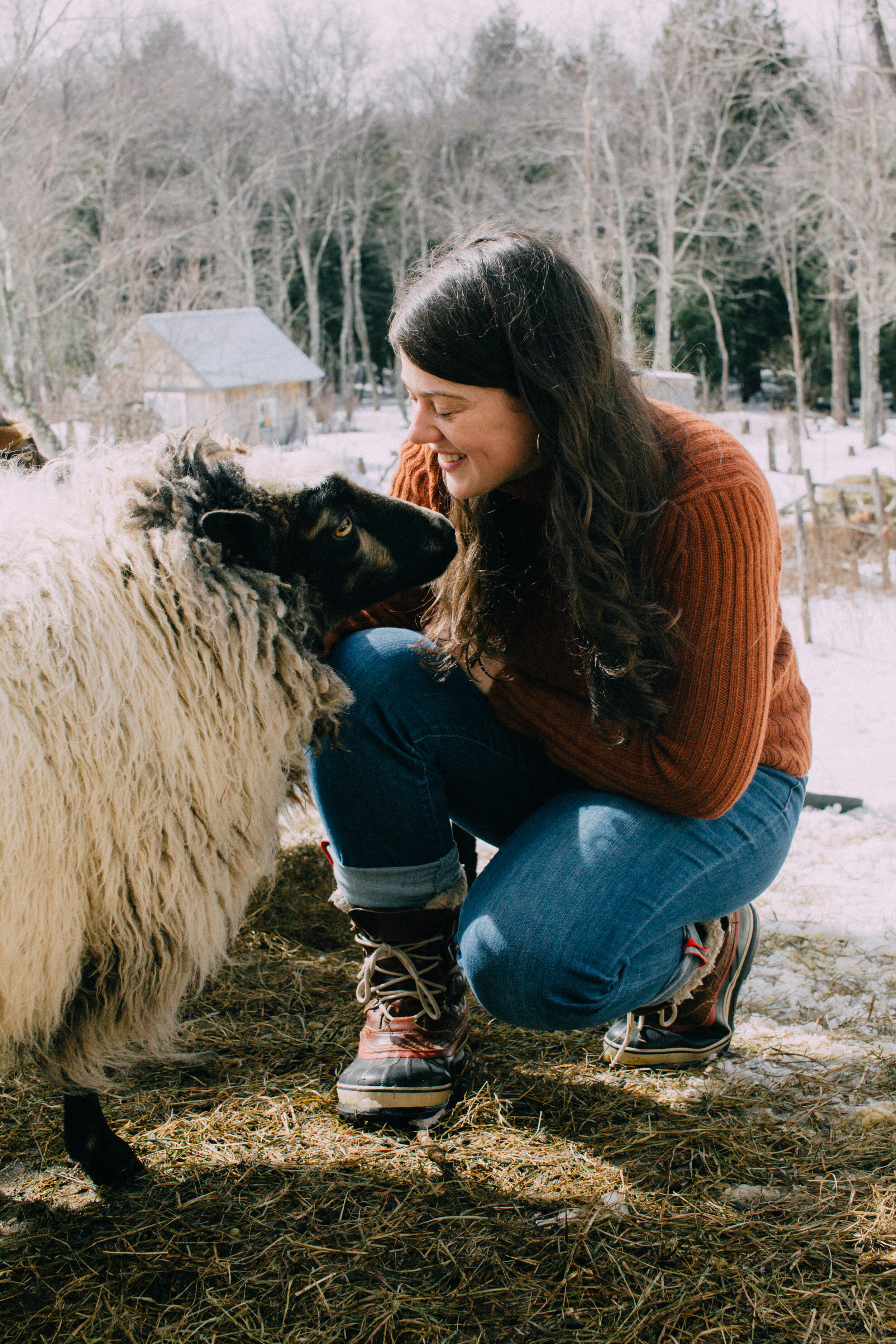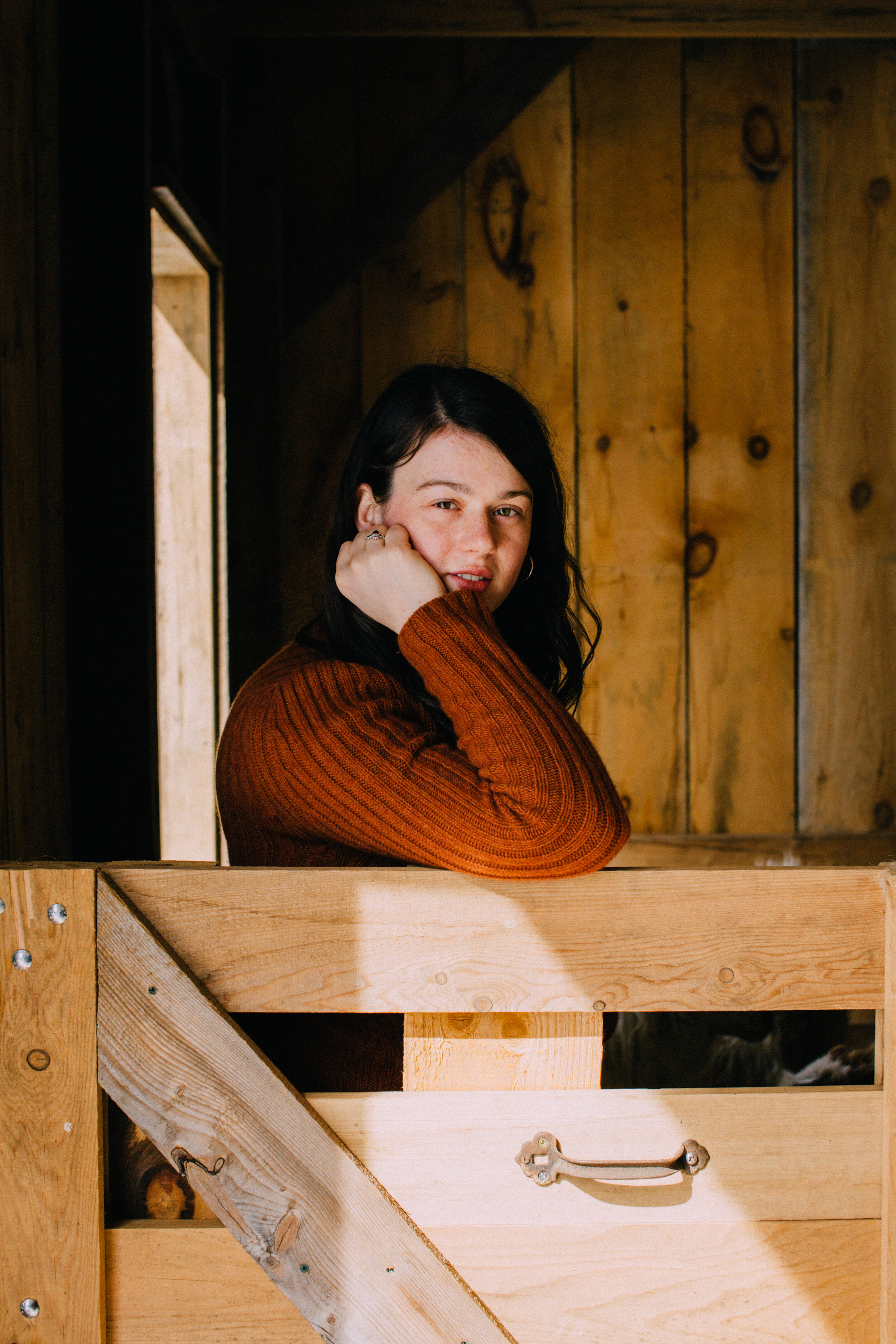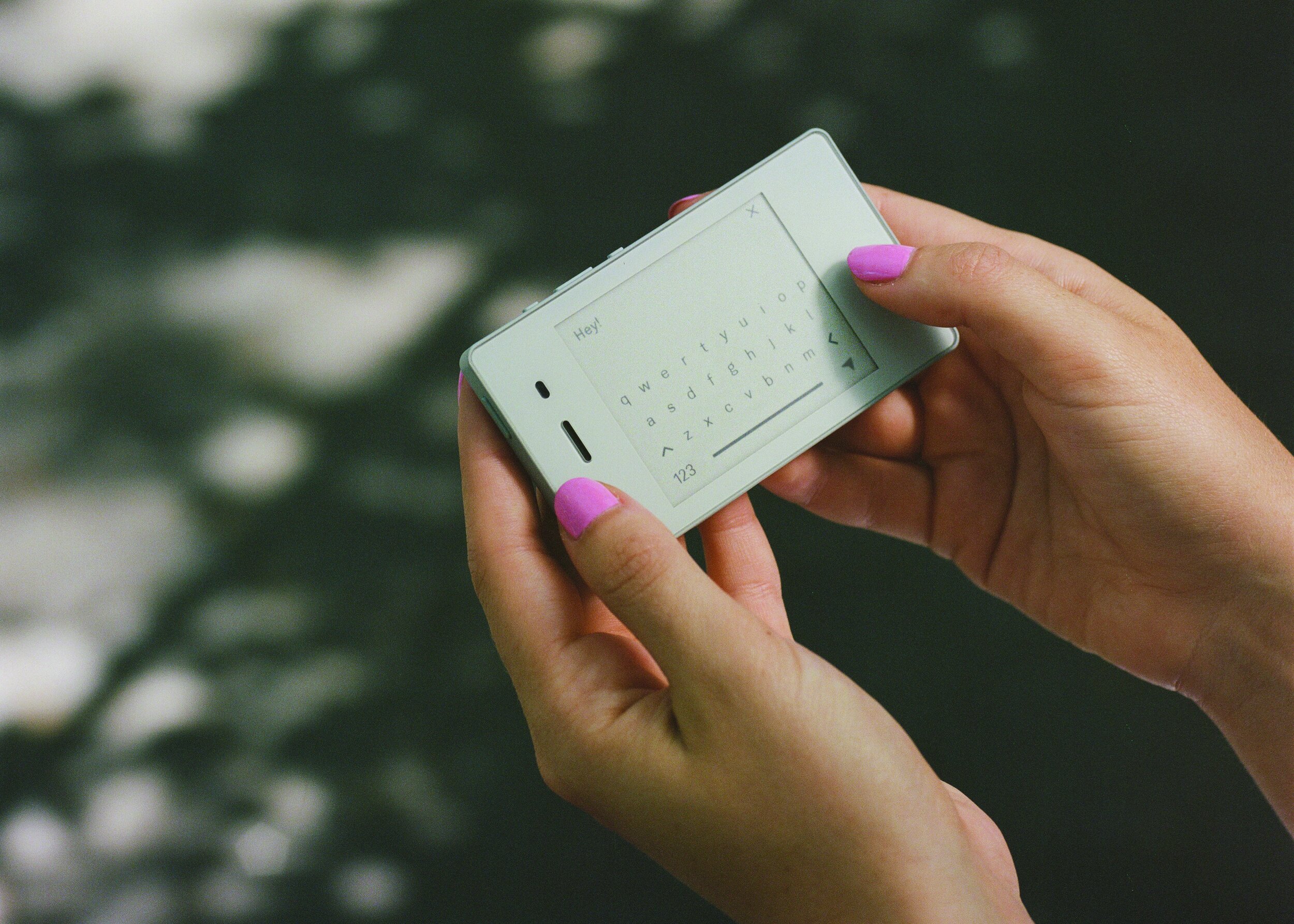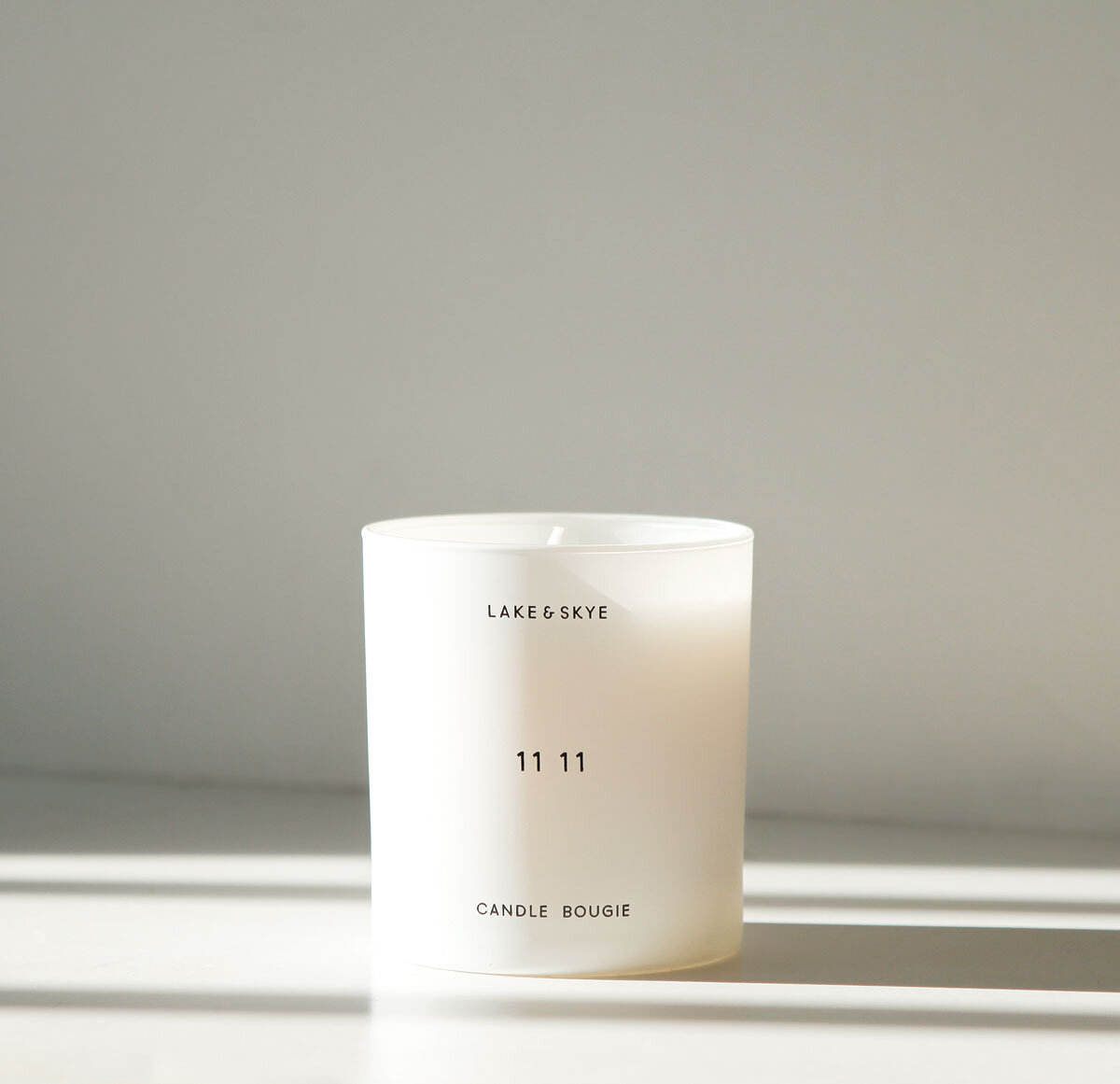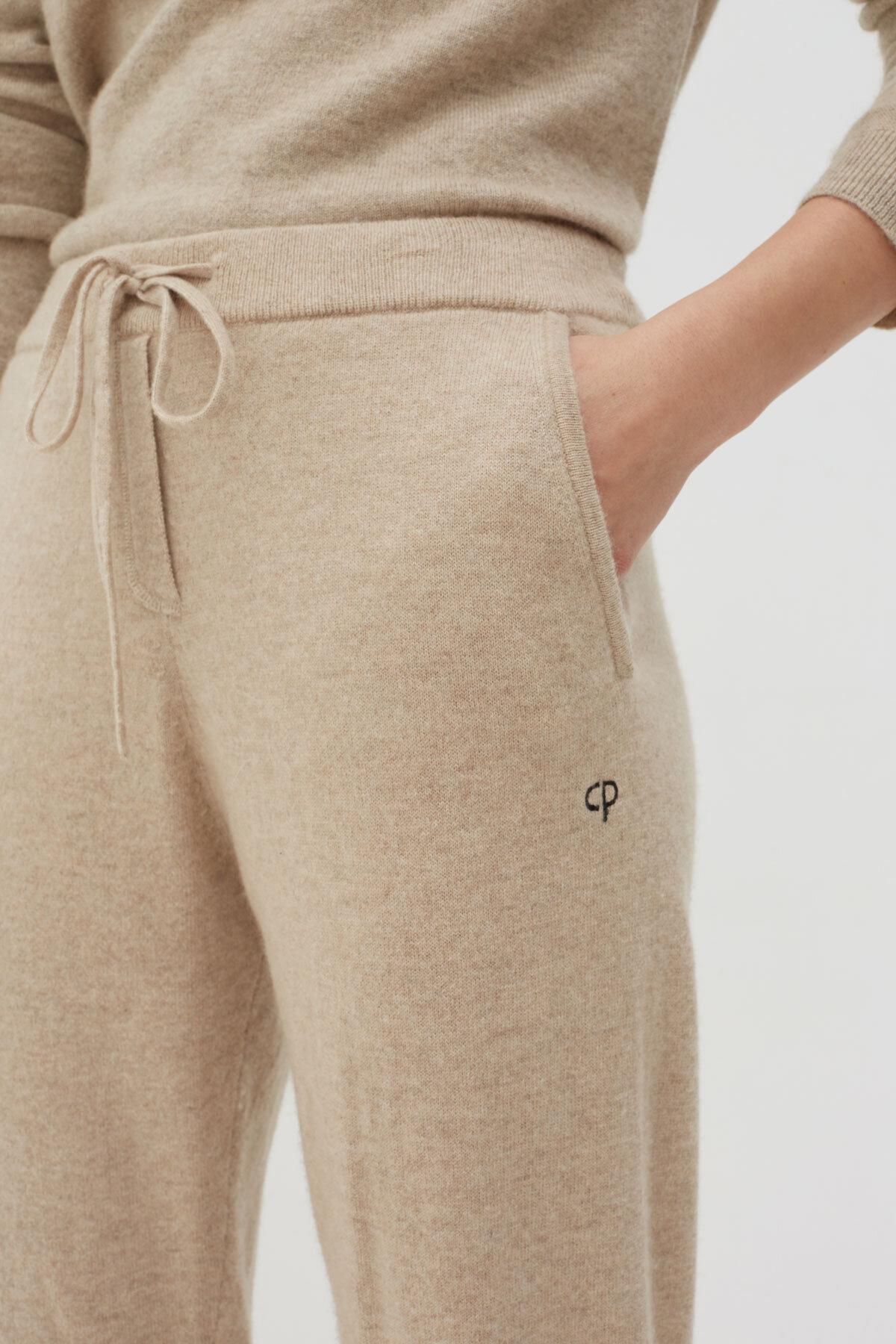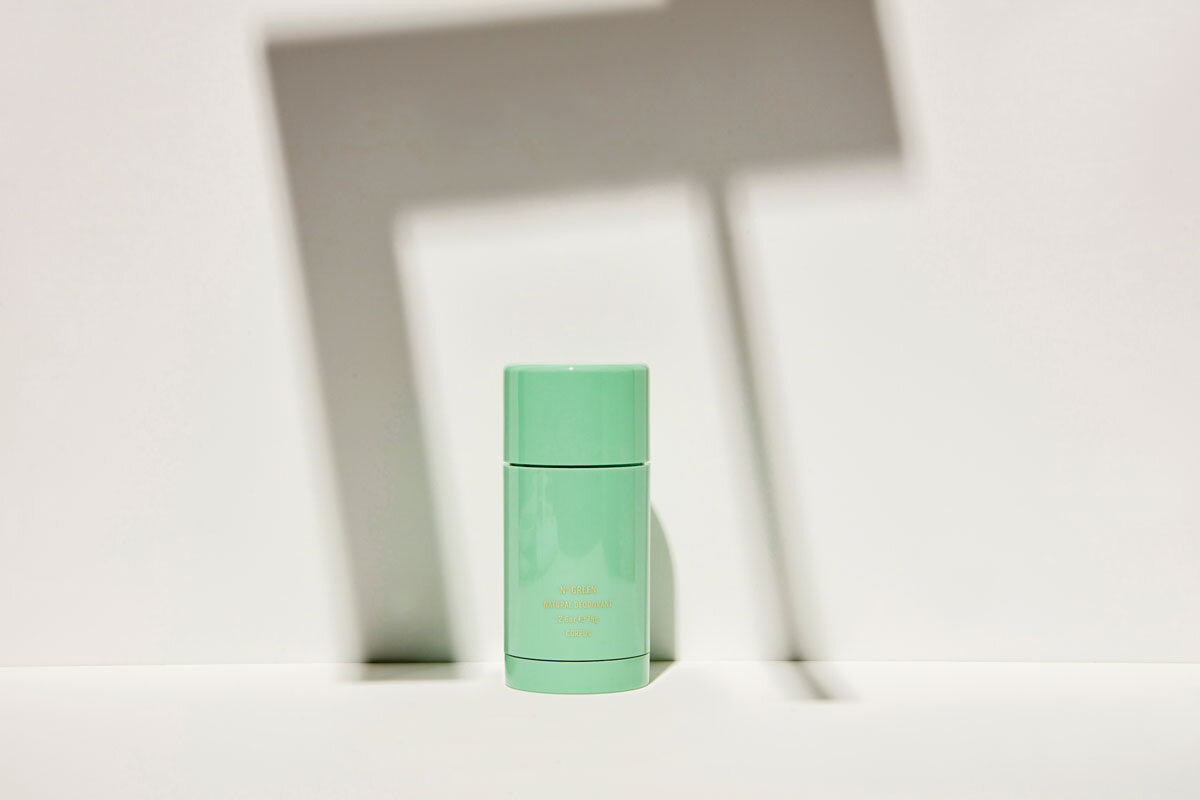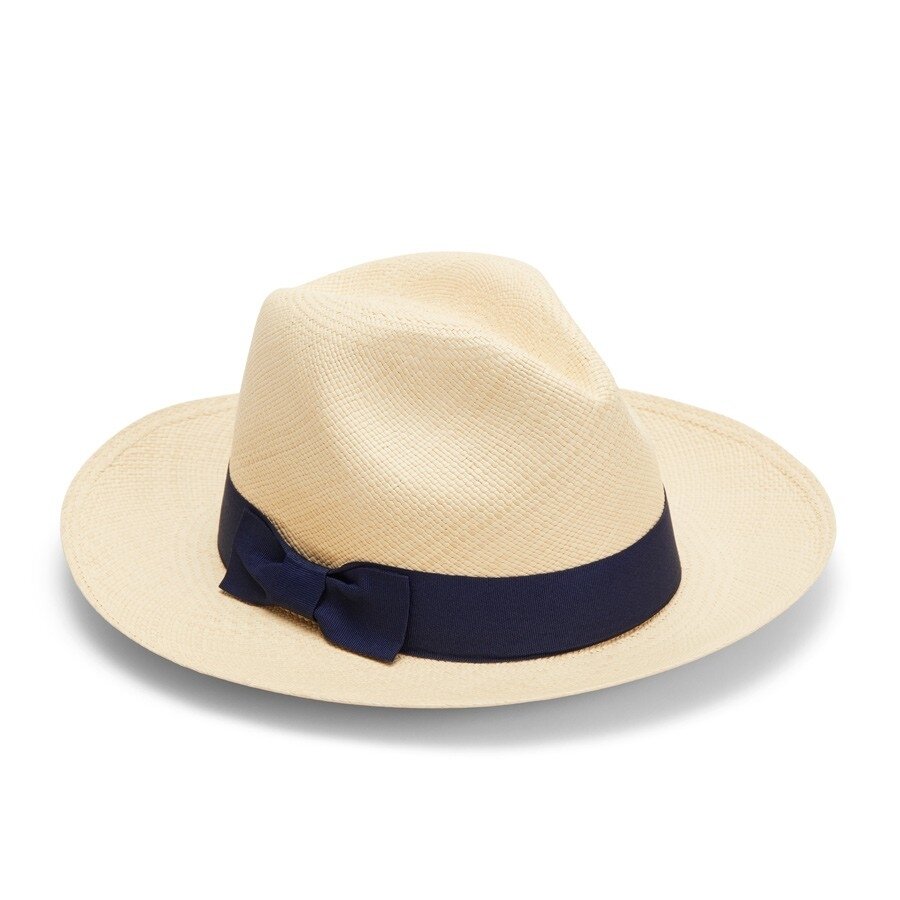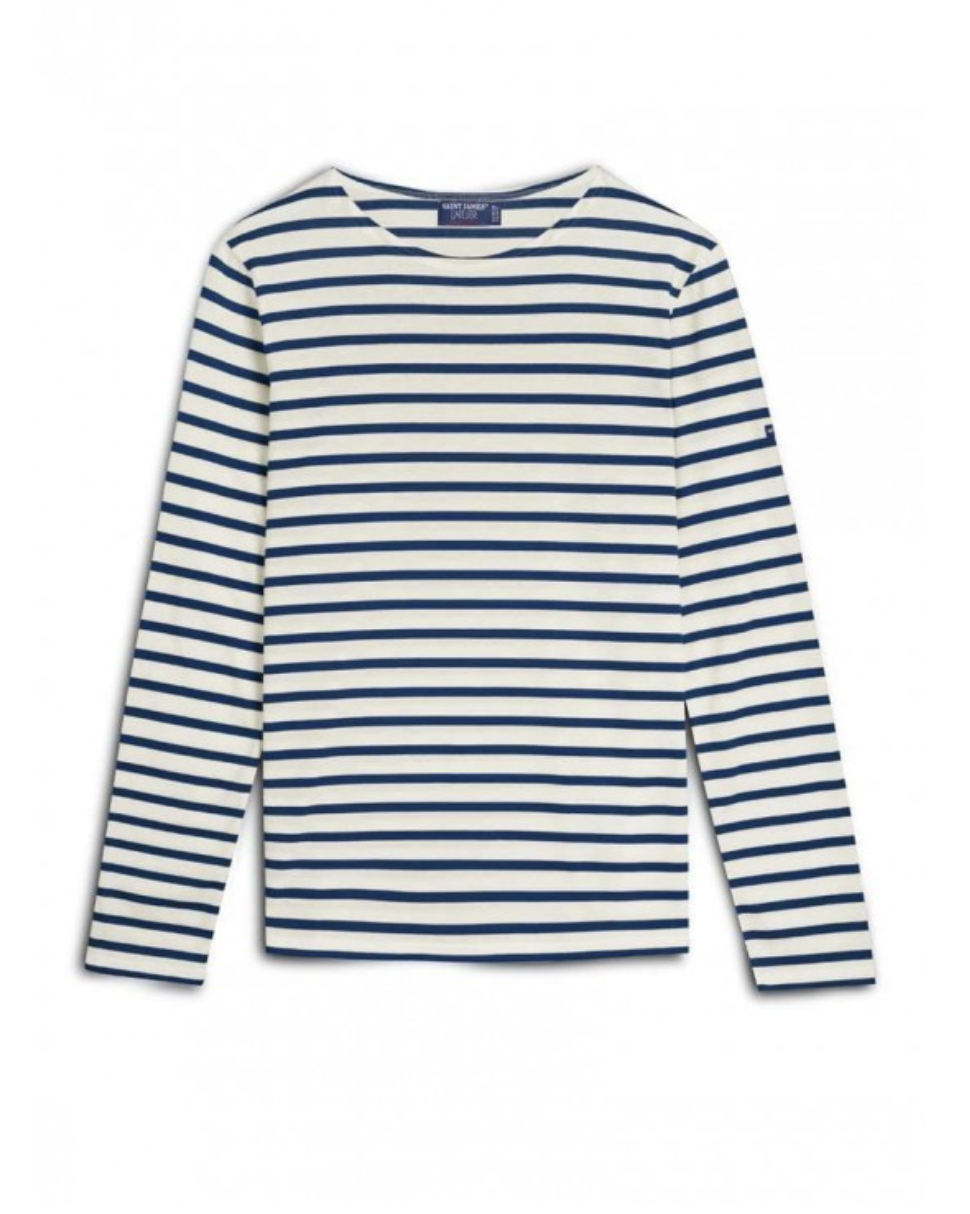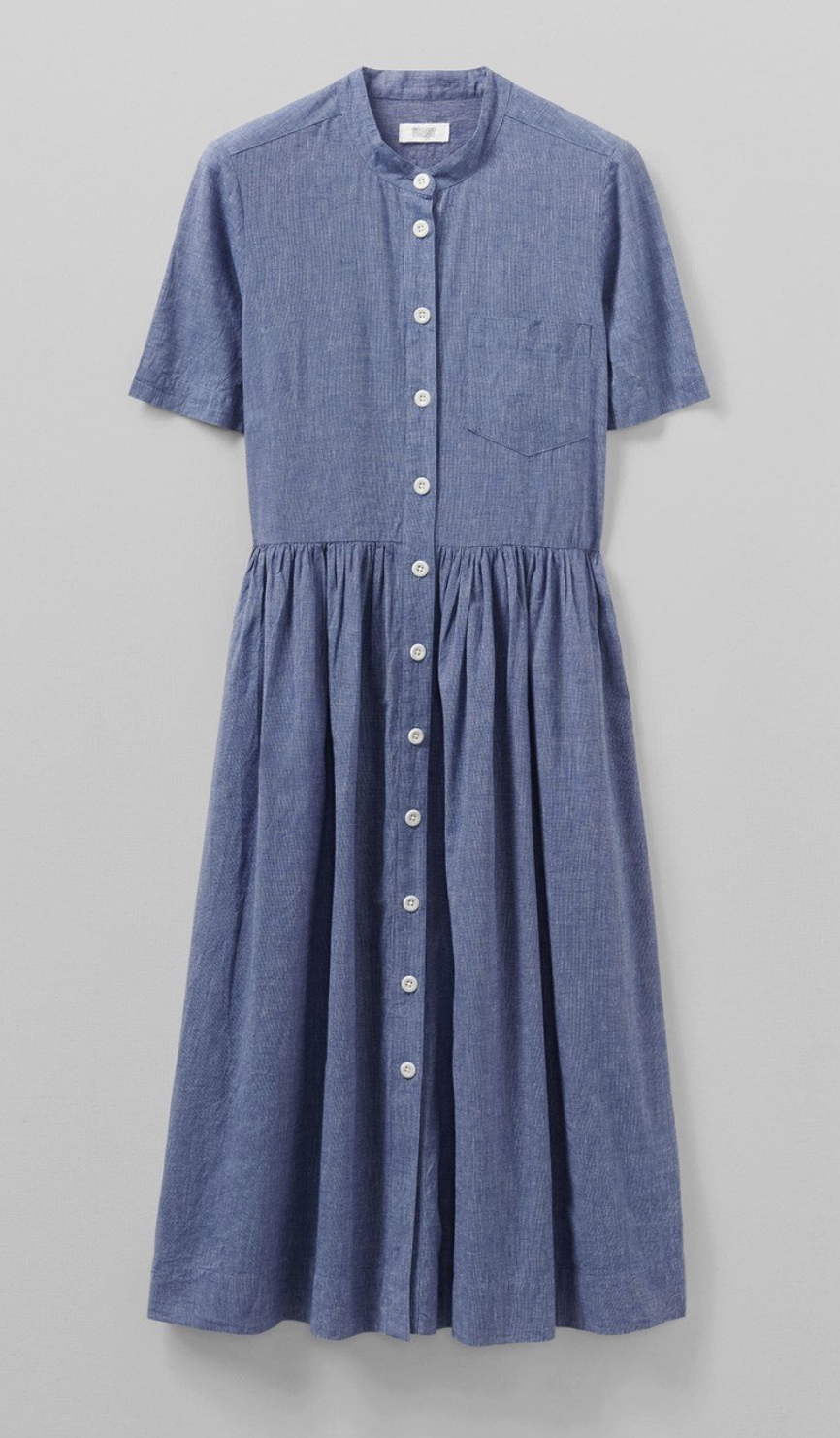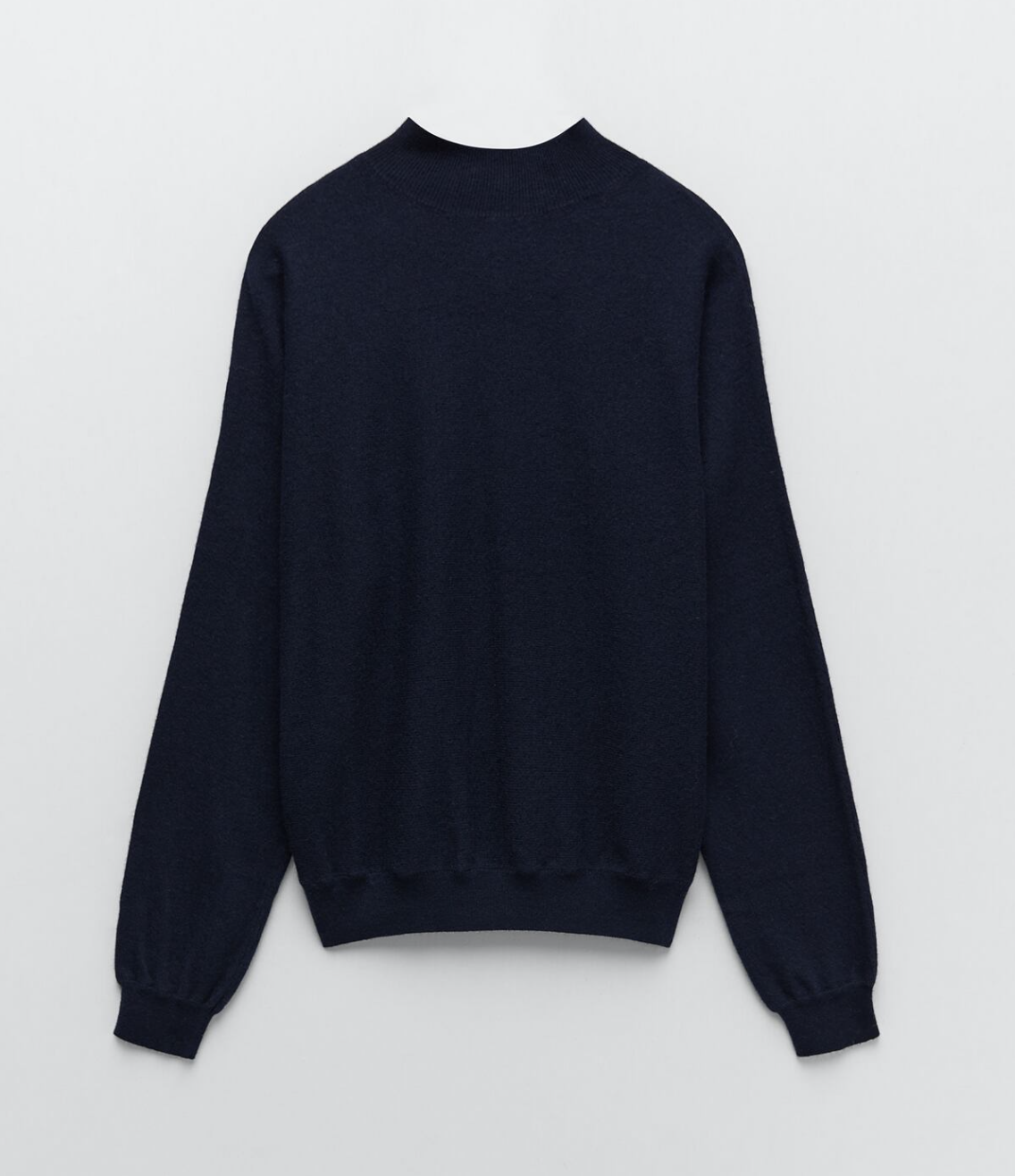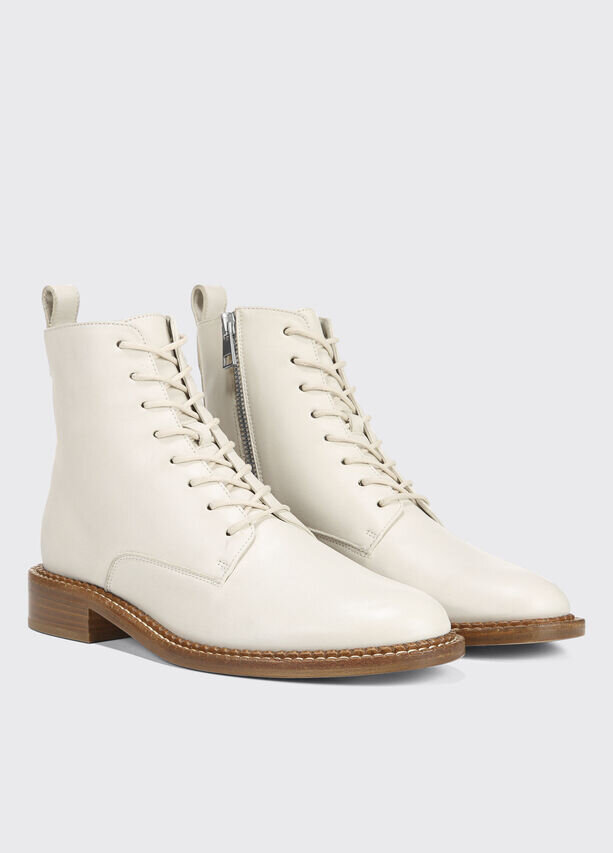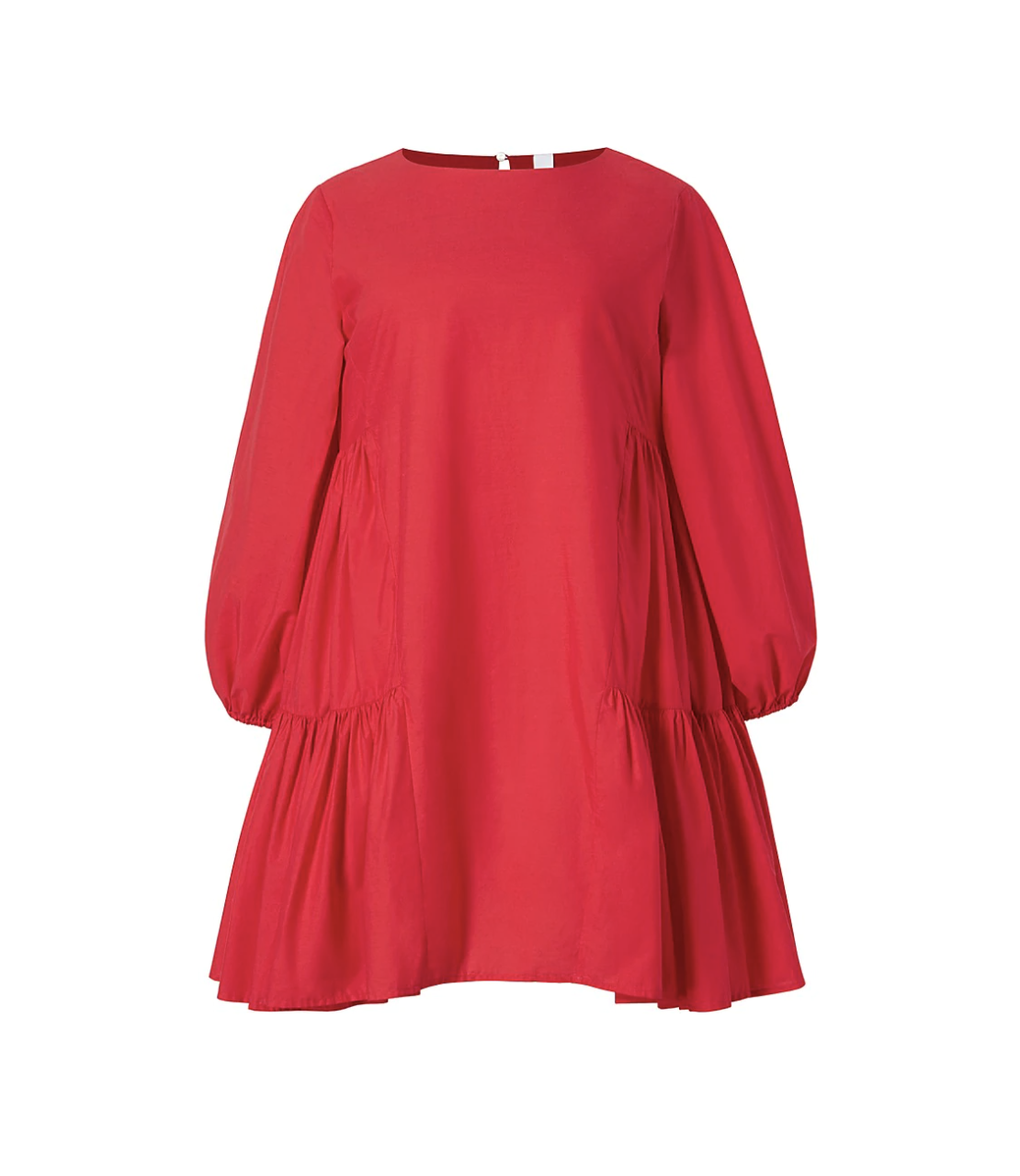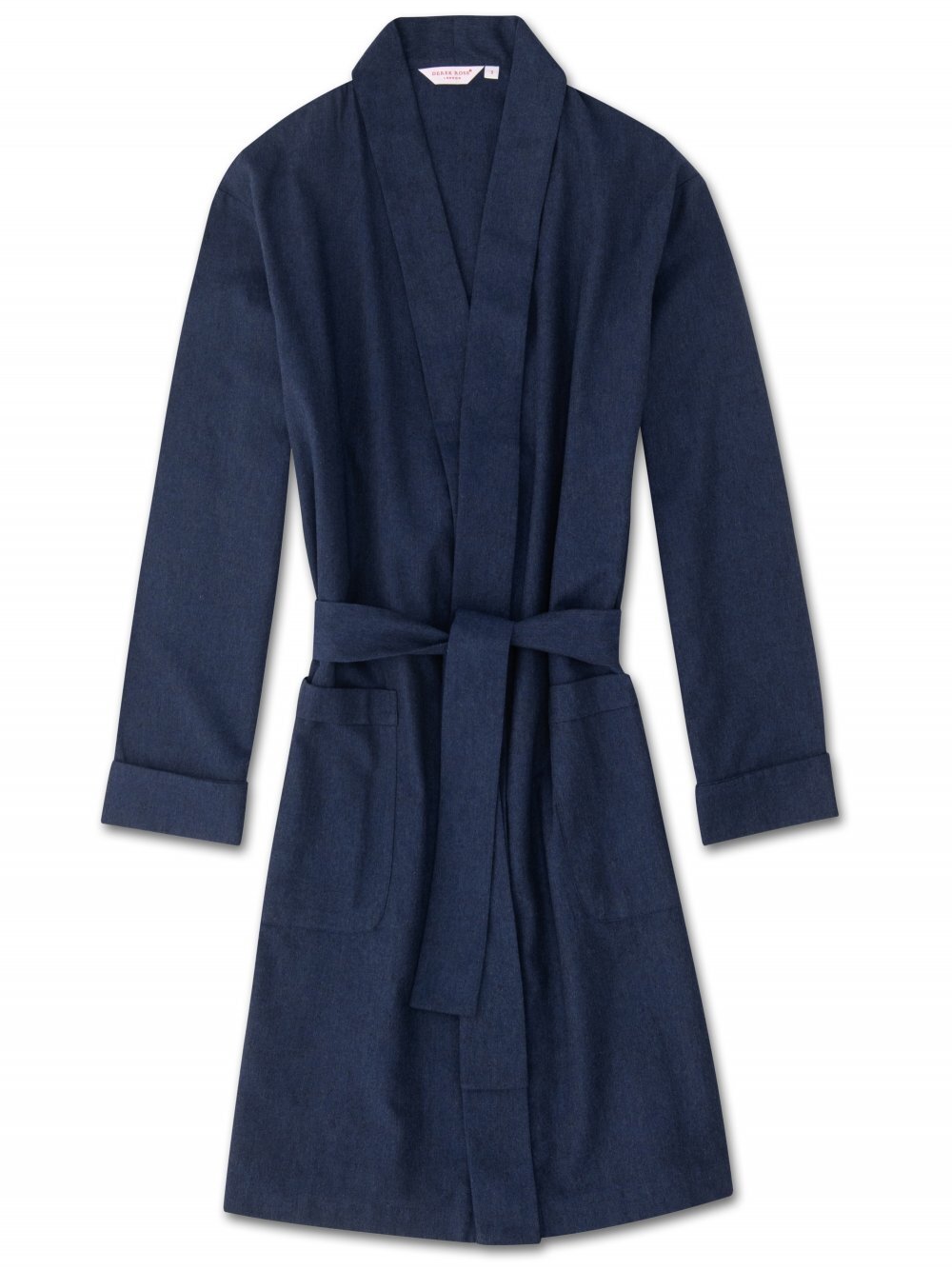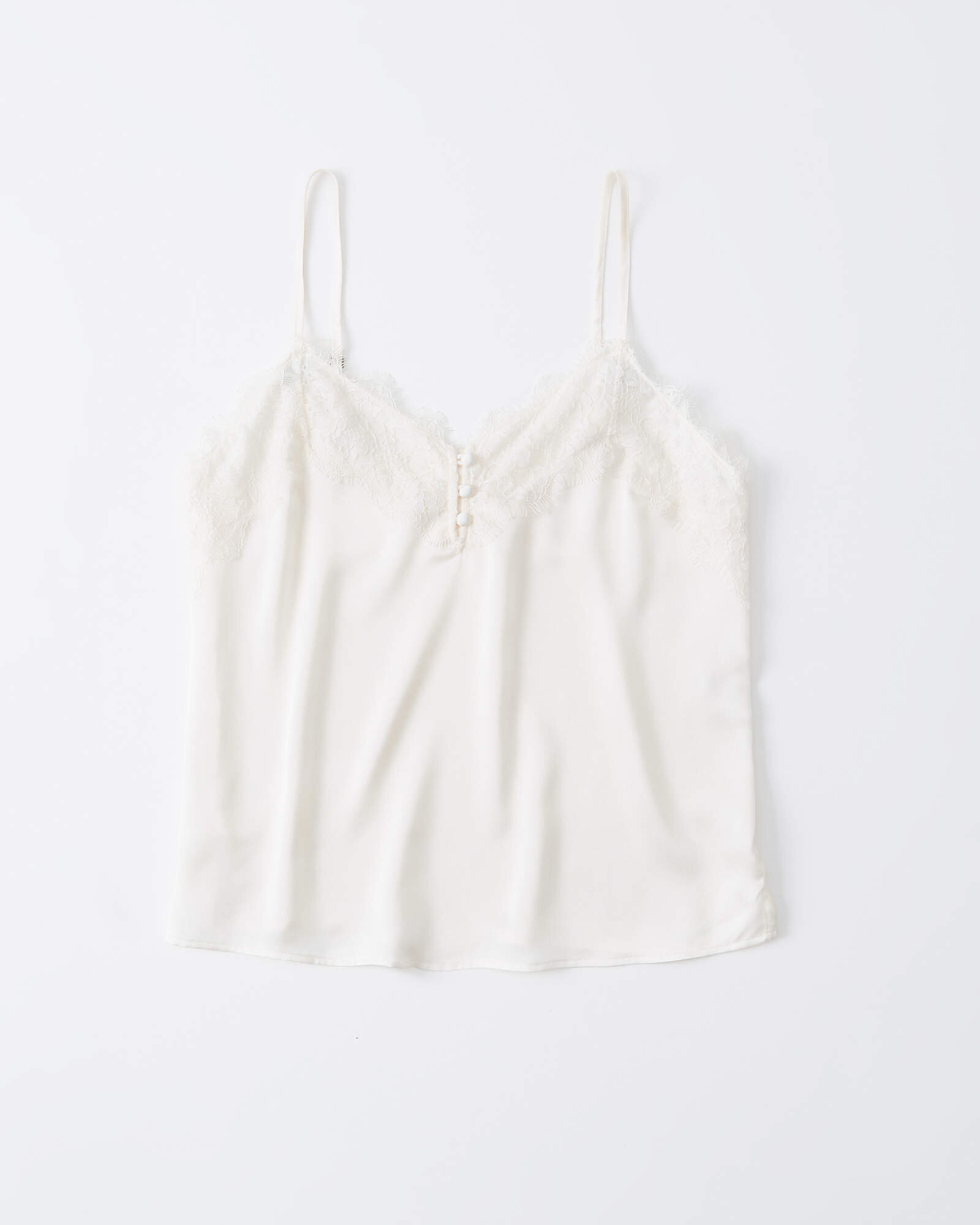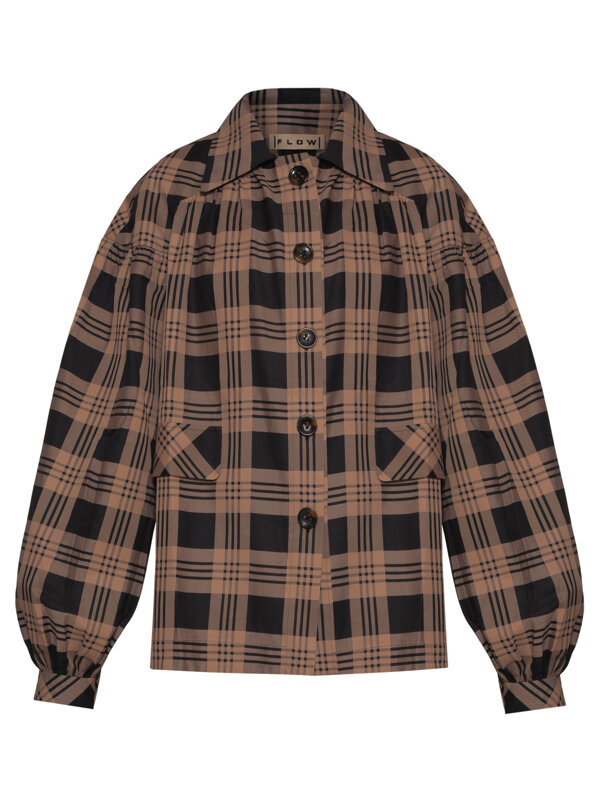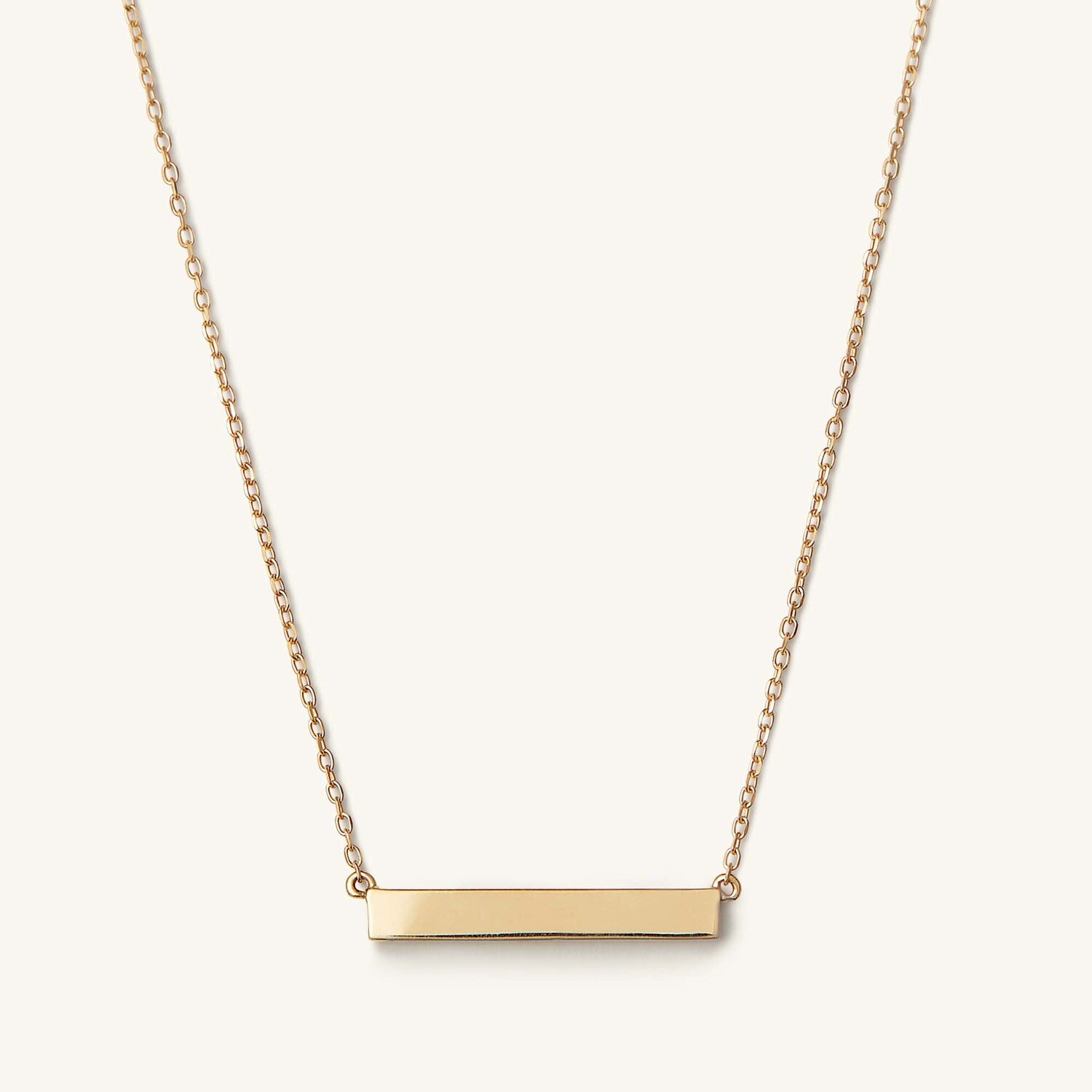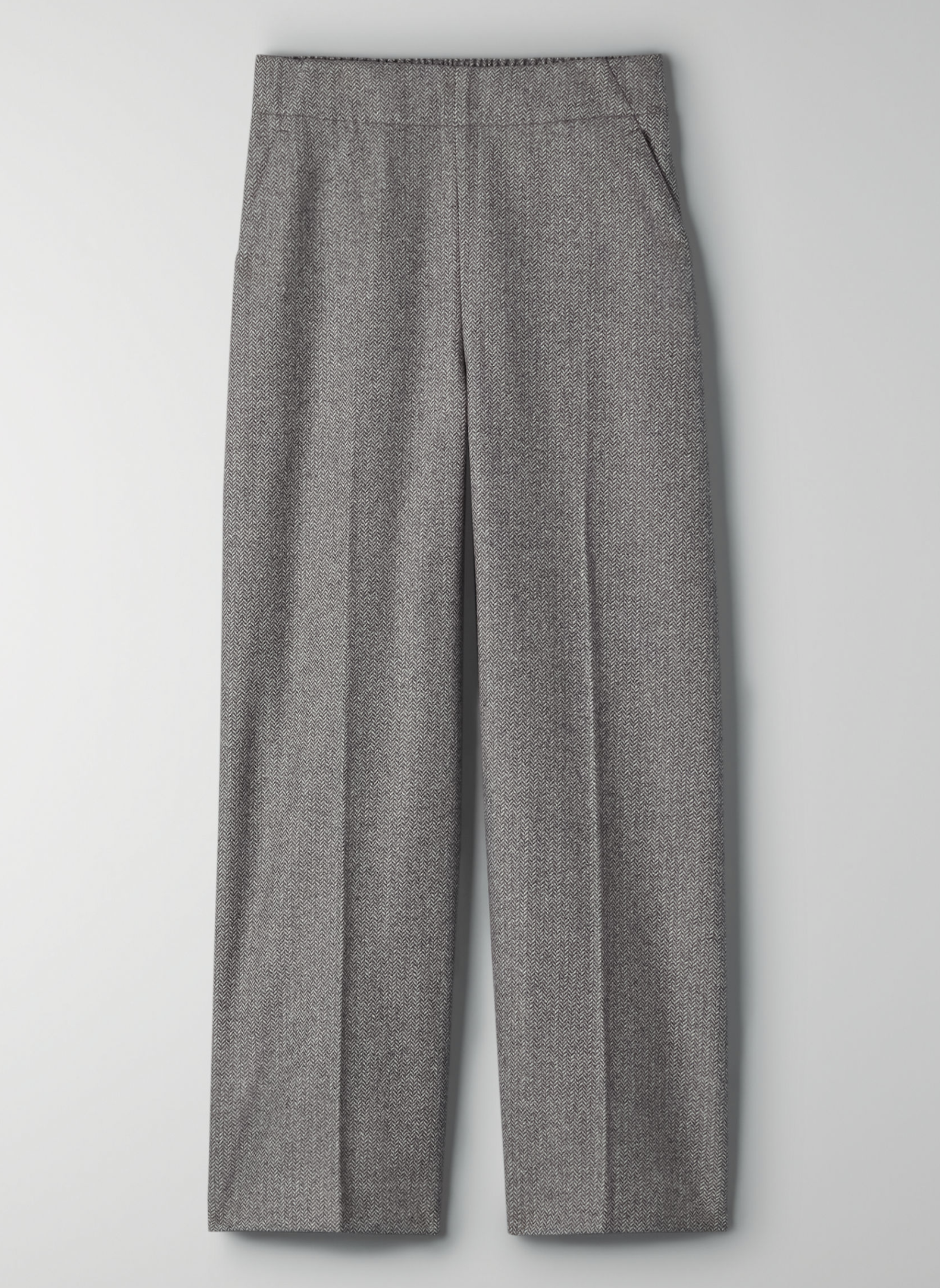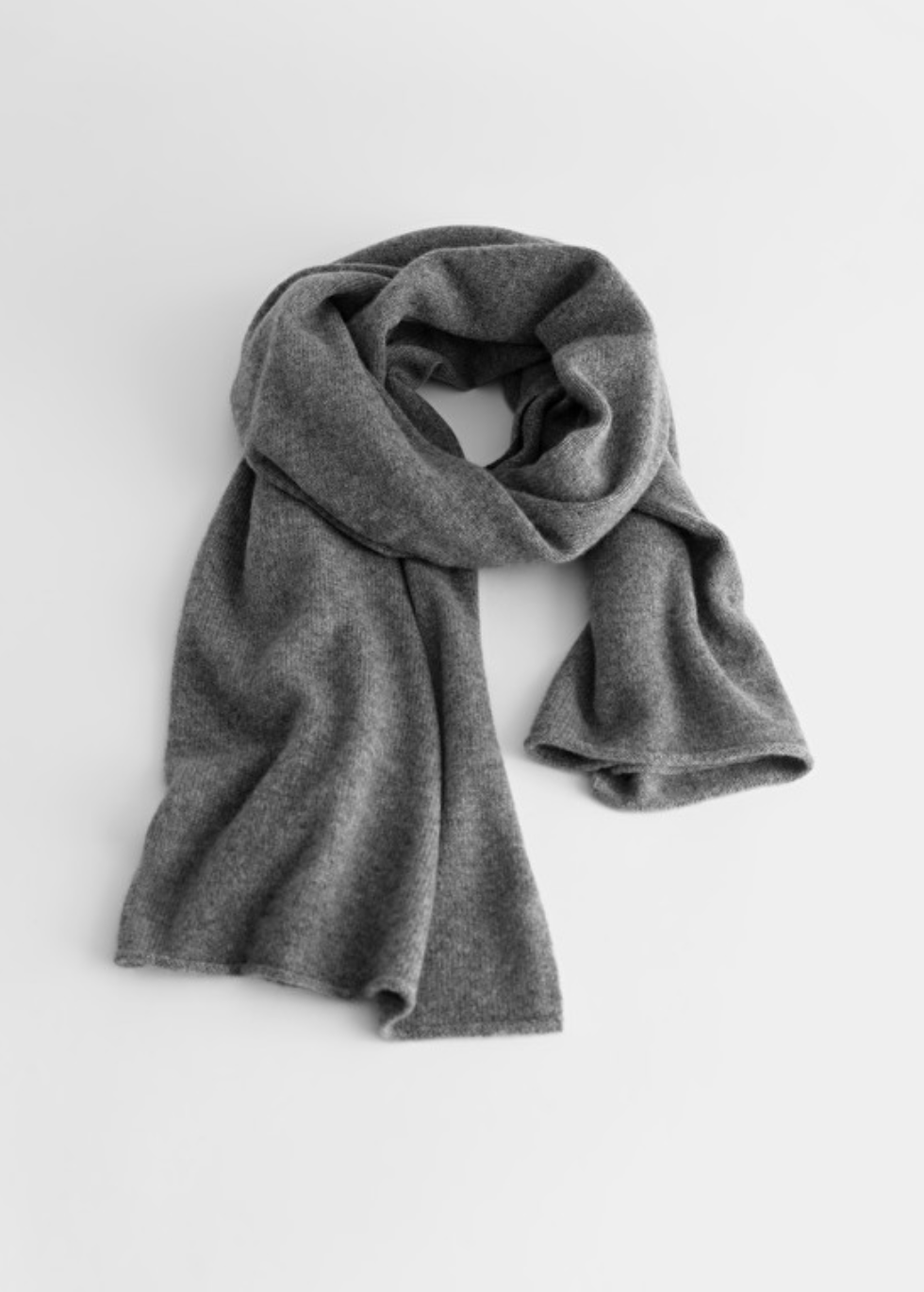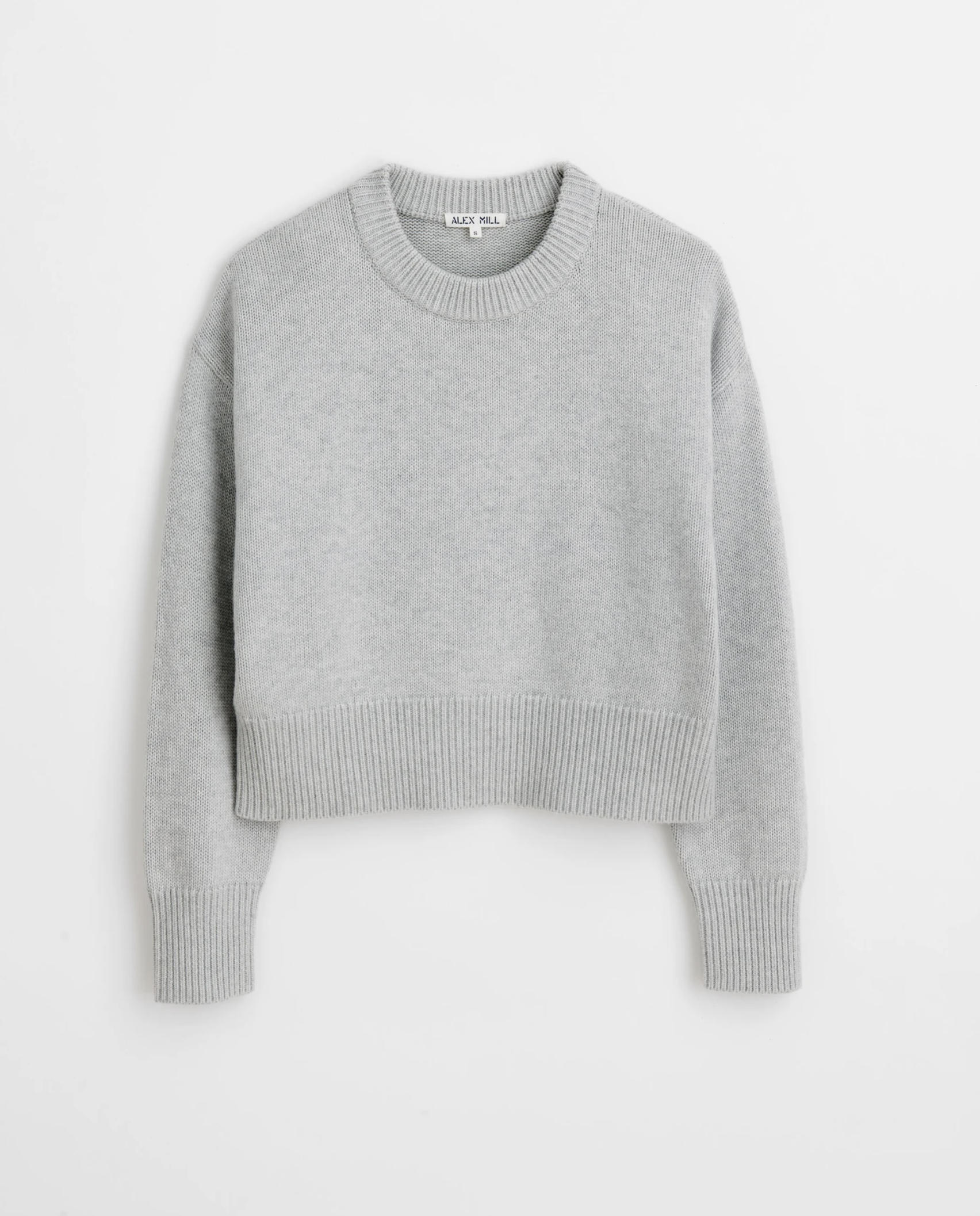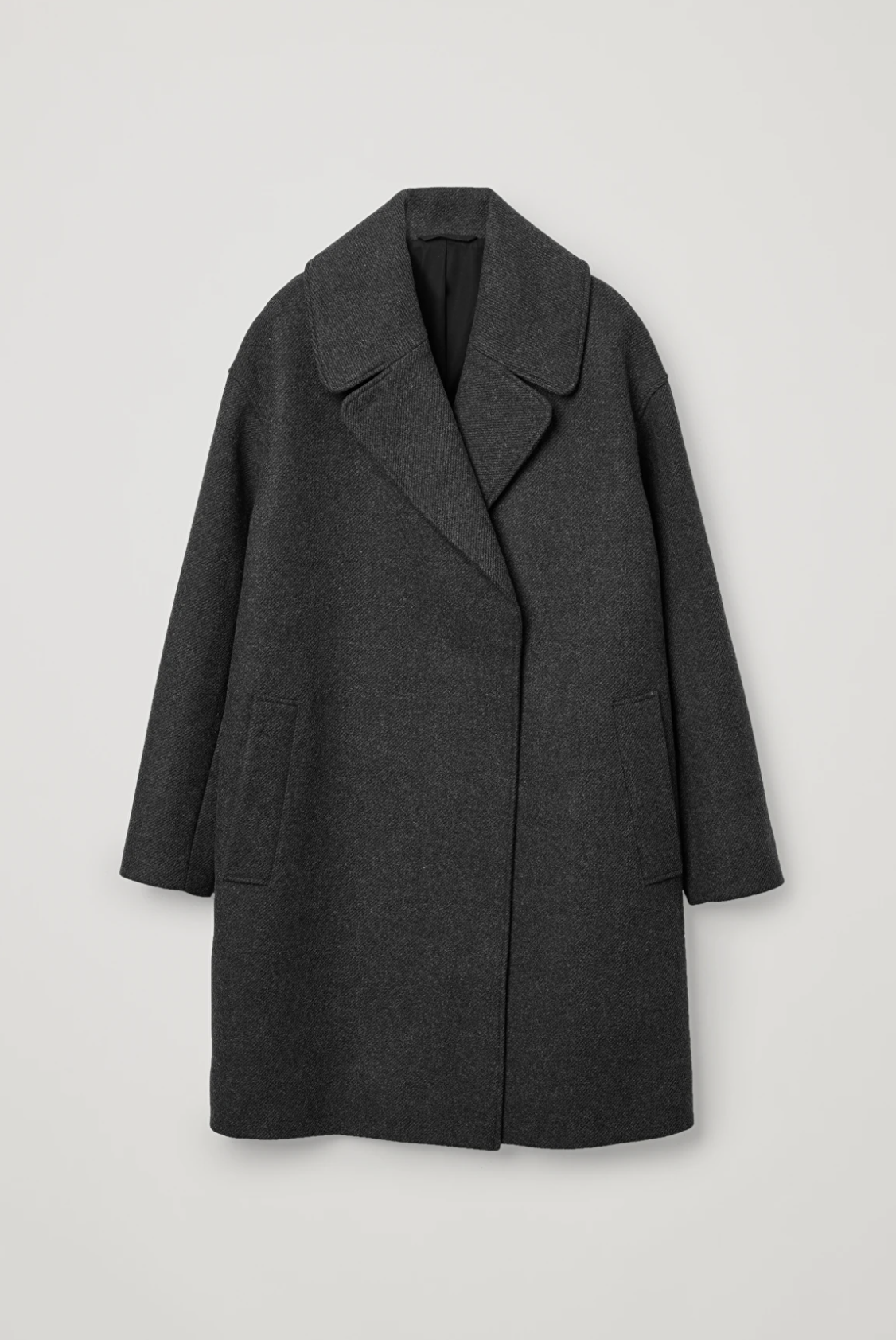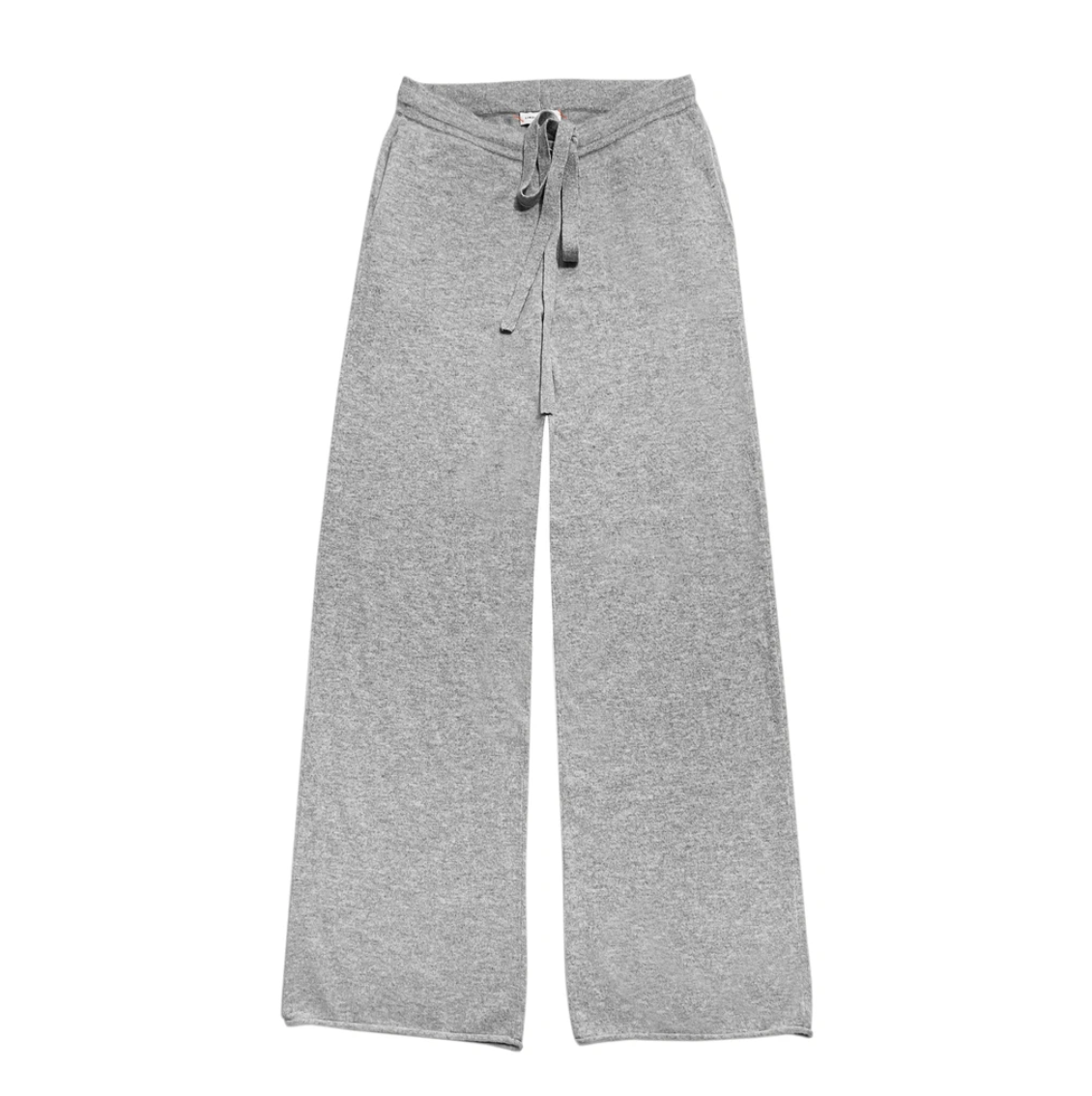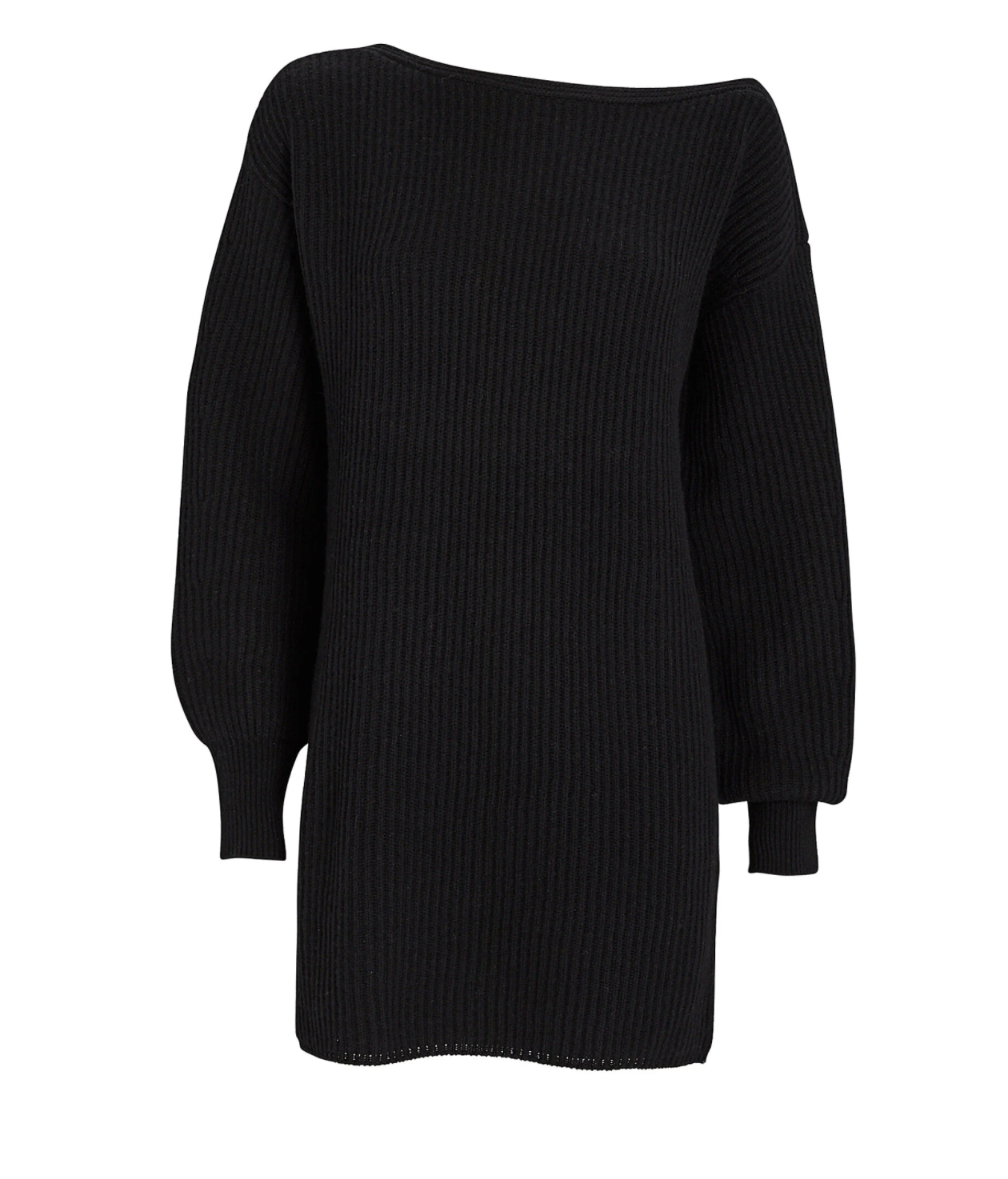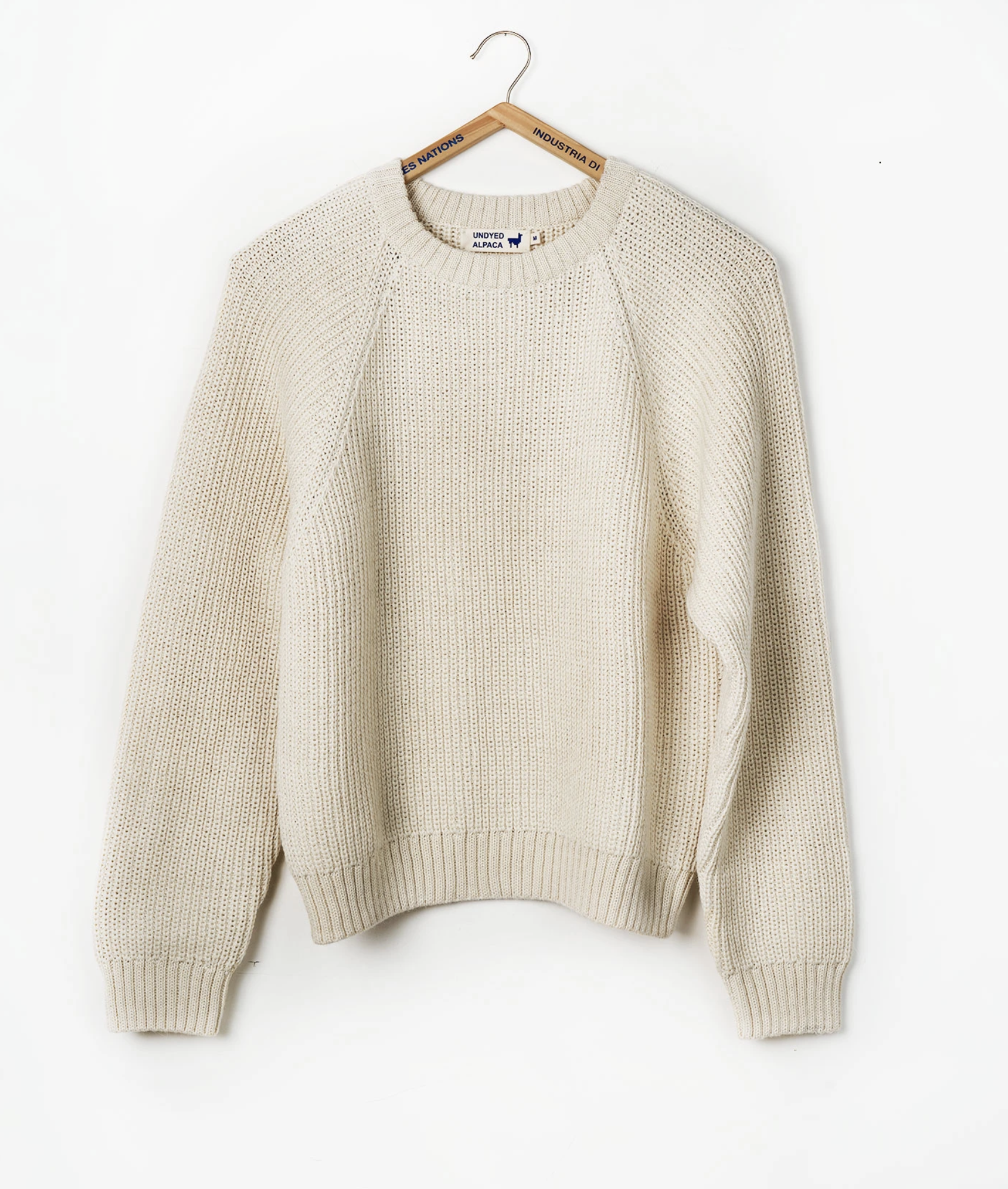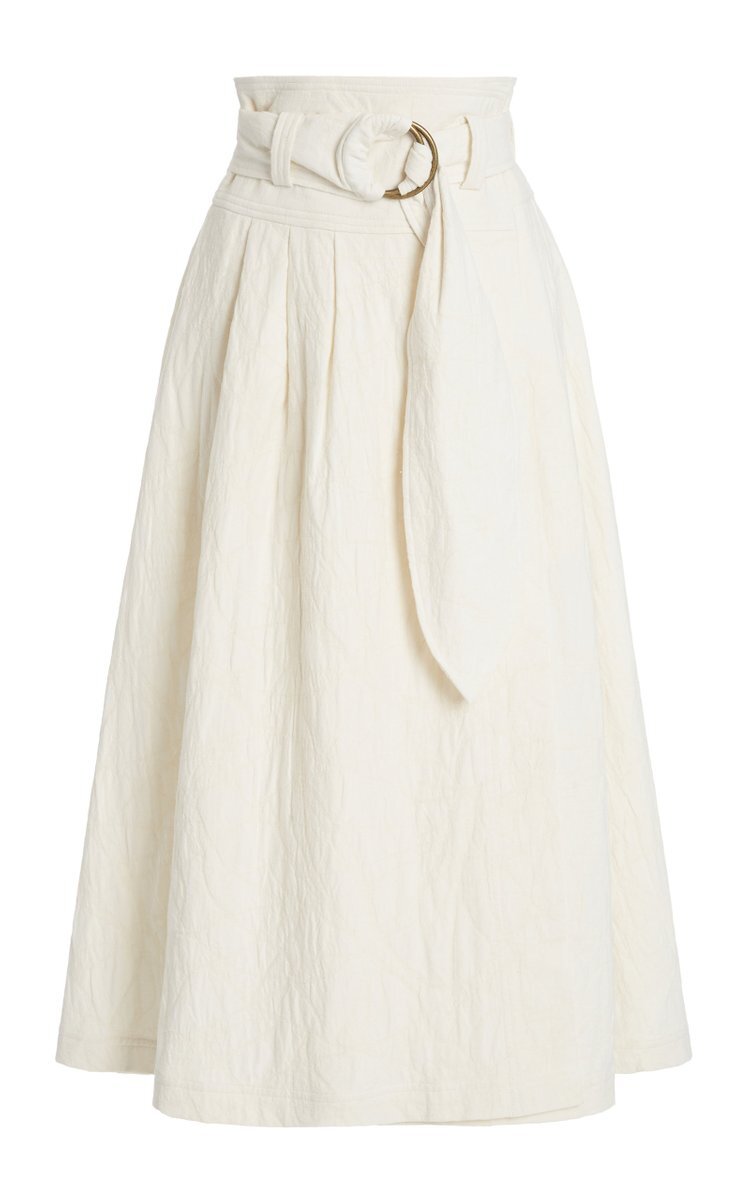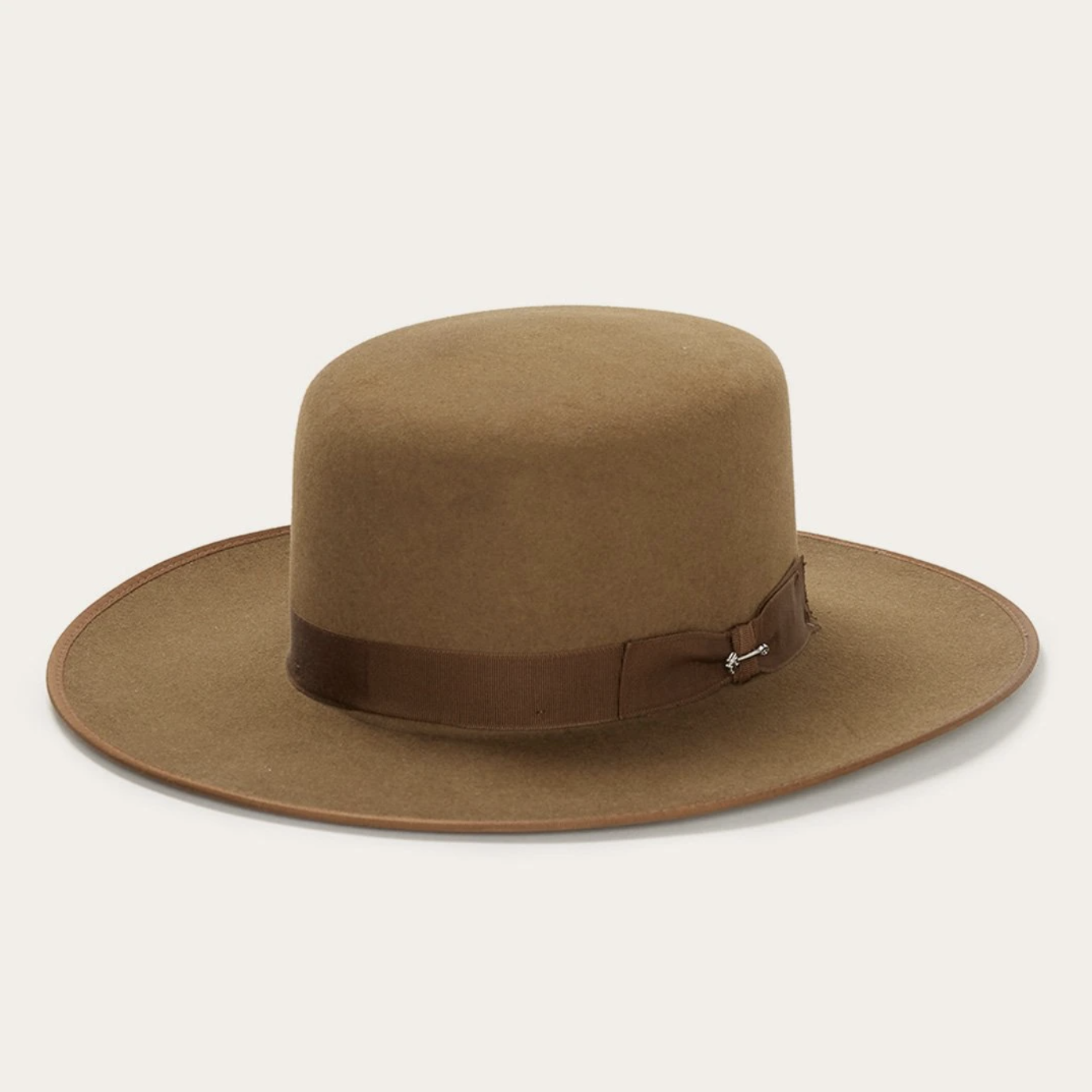World Changers: Iris Fen Gillingham
When Iris Fen Gillingham arrived at college at 16 years old, it was the first time she had a flush toilet. “I grew up off of the electric grid on a farm in the Catskills. I remember my brother asking why we couldn't have snacks in the cabinet and my mom answering, “Well, we have a whole garden outside. Go and pick something.” I got to learn what it means to live consciously with the land and I am so grateful for the perspective I have on the basic skills it takes to live,” she says. “It is something that I think a lot of young people are disconnected from.”
By Alexandria Haechler Photography Moriah Aslan
Up until Gillingham was six, her family ran an organic vegetable farm in Jeffersonville, but within ten years, the area was hit by three historical floods that ultimately decimated their farm. “It completely changed the course of my family’s life,” remembers Gillingham. Soon afterwards, her father started taking her to town meetings over another pressing, local issue: fracking. “I’d be in the room with all of these leaders who were talking about why they were fighting fracking— for their kids and their grandkids— but I would look around and I would be the only kid there. I wanted to see their kids and grandkids there too because this is our future and these discussions are going to impact all of our lives. It prompted me to start speaking out,” she says.
Fast forward to this past December and the now 18 year-old, full-fledged environmental activist helped to deliver over 100,000 signatures to New York state in an effort to ban fracking (as well as waste water and water withdrawals used for fracking) in the Delaware River basin. Gillingham has found her fellow youth activists, too.
A member of Zero Hour, a youth-led climate organization that facilitated a march on Washington, she joined her peers in meeting with over 40 senators in an effort to get them to sign a “no fossil fuels money” pledge, which declared they would stop accepting campaign money from fossil fuel executives, lobbyists, and their front groups. “For me, I’m not intimidated because I feel very supported by the group of young people that I’m surrounded by. As teenagers, we don’t have a decision-making body in the rooms where the decisions are happening so it’s vitally important for us to use our voices,” Gillingham says. “The elected officials might not have all listened to us that day, but we are continuing to fight and we will continue to call for change.”
Recently, Zero Hour introduced Getting to the Roots of Climate Change, a new program which will appoint youth ambassadors who will speak to climate change from an educative perspective, teaching their peers about contributing factors that extend far beyond inclement weather. “Where I come from inspires me,” adds Gillingham. “I want to bring knowledge back that can help my community here to flourish and to survive what is going to be a very turbulent next decade.”
This article originally appeared in DVEIGHT Magazine, The Women’s Issue #12.
Disconnect: Going Light
Our smartphones aren’t just a convenient mechanism that delivers all of our media joys; it functions as an apparatus for the advertising industry that is quietly embezzling our time, attention and data. But relief is coming. The Light Phone II, created by tech veterans Joe Hollier and Kaiwei Tang who met at Google, is a minimalist handset designed with two primary functions: to talk and text. We sat down with Tang to discuss our blue-screen addiction, the advantages of going “light,” and the urgency to reclaim our lives.
Interview by Nhi Mundy
Using the Light Phone II was quite a different experience. I struggled at first. There are no apps, no internet, and no social media. Are all these things that bad?
We’re not against technology; we’re against the business model behind the creation of apps and social media, one that is trying to maximize our time, attention, and data and then profiting from that data. We like tools—getting directions, listening to music, texting people; those are great. It’s similar to how we use a hammer or scissors. You use it when you need it, and then you put it back when you’re done. You don’t swipe your hammer for two hours, but that’s what we’re doing right now, and that doesn’t seem logical.
I’ll be honest. I’m not entirely sold. I understand the idea of simplifying that aspect of our lives, but it’s just proving so difficult in practice.
We know it’s not for everyone and what we are asking is foreign. But for us, this is an attempt to encourage people to take a break. There’s a common reaction when you go “light” for the first time without your smartphone; the anxiety hits you right away. You’re sitting there, and there’s nothing there for you to swipe — no social media, no camera. Our phone was designed to be used as little as possible because we don’t think that phones should overpower your life. With our phone, you have to slow down.
Your phone isn’t shiny, and it isn’t fast. You created it, knowing full well that the market was trained to be attracted to the complete opposite. Which, by the way, is a terrible business model.
If you think about it in terms of positioning, the product is the opposite, and the positioning is the opposite. Every company is trying to get more data and attention from you, so that’s the trend. We’re trying to offer something that helps you realize that there are other options. The Light Phone II may not be perfect at the moment, but at least it’s an option without all the distractions. It allows you to start thinking about technology and how it makes sense to you as an individual, rather than fighting with an attention-driven machine.
So having the consumer customize the phone rather than being customized as a consumer.
You can also argue that you can customize your smartphone and delete your apps, but the temptation is there. The eight-inch screens were designed for watching videos, designed so that animations look amazing and the colors are vivid. So that when you’re waiting for something to happen, your smartphone is there to show you a spinning wheel, and your eyes can never look away. It’s all by design. I get it when some customers say that they don’t need to go “light” because they have self-control. But, I’d argue that it’s not about self-control anymore. With the billions of dollars invested in big tech and all the talented engineers creating products to capture your time and attention, it has become increasingly impossible for self-control.
In a way, it reminds me of the Palm when it first came out. A lot of people bought it, but it never caught on because it was ahead of its time. Your phone is similar in that it is trying to establish a new behavior in people. But the idea of not being connected is alien for many. It seems like you have a lot of work in terms of educating your customer.
I agree, and it’s not just us. If you saw the documentary on Netflix, “The Social Dilemma,” all the influencers are switching off their social media. It’s a movement now. And with more technologies like 5G and newer products being introduced, it’s going to get worse. I feel like more people are becoming aware of what’s happening — the negative impact that it’s having on our mental health. What are you going to do if you don’t want to use a smartphone? You could buy a flip phone or a Nokia that was designed 15 years ago, but those are bulky with 2G, so the connection is spotty. And most of them still have browsers and apps. We’re hoping to fill that gap for people who want to break away from the distraction.
What’s the end goal? I know it’s a niche product meant to solve a social problem. Was money ever part of the equation?
Of course. My co-founder and I are really passionate about the mission, and we think the Light Phone II deserves a place. But we have to make money, and we do have quite a lot of investors that are supporting us, including the co-founder of Lyft and Twitter, John Zimmer, and Tim Kendall from Pinterest, who was also featured in “The Social Dilemma.” He is actually also a board member. So we have quite a lot of support for our mission. In terms of the business opportunity, every smartphone owner can potentially have a Light as their secondary phone. Imagine 1% or 1.5% of smartphone users who resonate with what we are trying to do — that’s roughly 20 million people. I’m sure more than 0.5% of us are sick of smartphones and the business model behind it. From the research that we’ve seen, 24 to 30-year-olds take digital detox most seriously, and that’s reflecting on our customer base. It’s the younger generation, and that was encouraging to me. They’re born into social media, but they are more aware of what’s happening and are looking for different options.
What you’ve done is kind of like an f-you to the tech industry. But as a designer, how do you see this playing out? Technology is moving so quickly, yet you’re telling us to push pause.
Design, to me, is the lifestyle. Design is a way to figure out the why. Meaning you have to understand why you are creating certain things for certain people. What’s the point? What’s the problem you’re trying to face? Why the shape? Every single detail has an intention. I used to work for Motorola and built phones for them. There was never a why. We would be creating a phone every other month, each time, slightly better, slightly bigger. Nobody ever understood why. So what we’re trying to do here is almost like a reaction to that trend. We feel like there is a crisis in humanity: the way we use our technology, the way we avoid face-to-face conversations, the way we escape to our smartphones so easily. If you ride the subway in New York and watch people using their smartphone, you can see people pulling out their smartphones, swiping it for five seconds, and putting it back, then realizing that nothing is happening. And in five seconds, they’re pulling it out again. And they keep repeating that over and over again. I don’t think this is the kind of future we want.
Right. So, there seems to be this kind of movement, this emphasis on simplifying our lives, a push back on consumerism. We’ve seen people moving outside of the city to places like upstate New York. They’re moving because they can work remotely and stay connected. How can your phone work for the people who live in these isolated areas, who need to be connected?
It’s fascinating seeing what has happened since the lockdown. We’ve seen more people become aware of their relationship with technology when they’re home 24/7. They realized, ‘Wow, I’ve spent all my time on my laptop or my smartphone.’ But even in lockdown, you can potentially create a space that doesn’t have all the temptations — a space or time that’s carved out just for you, to read books, or whatever — that’s your time. You’re not giving away your time or attention, or data to companies. Many people are starting to realize how abusive this relationship is with their smartphones. It’s a relationship that we’re all in right now.
Quiet Pursuit: What we’re reading
The cold months ahead call for quiet contemplation—a deliberate effort to self-examine—as we retreat indoors. And the practice of introspection and daily reading, though we understand can be daunting in the digital age, is a healthier alternative to late-night doomscrolling and provides the much-needed relief and distraction during these tumultuous times. Here, a reading list of the best books we found solace in, books that have helped pave a pathway to inner peace for our writers and editors: to feel, self-reflect, and experience the world outside our walls of quarantine. We hope they do the same for you.
Bluets by Maggie Nelson
At the beginning of quarantine, when time became elastic and the days unspooled unceremoniously, I could not read. I could not do much of anything, except stare at the endless scroll of Twitter and take meandering walks through the patchwork hills above my house. Fearing for my attention span, I reread Bluets, Maggie Nelson’s slim yet sprawling excavation of loneliness, loss, love and desire, all woven together within the lucid lens of the color blue. Intertwining philosophy, theory, and autobiography, her kaleidoscopic prose poems never fail to kickstart my mind, staggering me with their strange, stark, visceral wonder. They plunge into unanswerable questions, sink deep and shamelessly into the pain and pleasure of womanhood. It’s the kind of book that evolves alongside you. Every time you finish it, you emerge dazed and different, and a little less alone. — Alison Greene
by Robin Wall Kimmerer
Kimmerer, a botanist and member of the Citizen Potawatomi Nation, weaves personal memoir with her knowledge of the natural world, history, motherhood and indigenous tradition. She gives equal voice to people as she does to flora and fauna, recognizing the essence that connects all life forms. Kimmerer’s voice is compassionate and empathetic. Her lyrical style dances on the page. This book is a balm for these turbulent days; a treasure to be savored, one heartfelt essay at a time.
— Lindsay Comstock
by Tara Westover
In Educated, the protagonist grows up in a survivalist Morman family in Idaho’s mountains, deprived of any education and is a victim to violence at home. She escapes her family trauma to study at Cambridge and then Harvard. This book is a true testament to overcoming the limitations of our sex outside of our own control. It reminded me that anything is possible for women despite the fact that we have been oppressed in different ways for so long. Educated gave me so much life and hope at a challenging time in my own life and reminded me of the unstoppable force and strength of strong women. — Kate Atkinson
Intimations: Six Essays by Zadie Smith
I often yearned for female conversations outside my own household during quarantine. I yearned to be in the company of good friends, discussing deeply, the distressing state of our world and how things ought to be. That moment of solace came in the form of a book. In reading Intimations, a compilation of short stories by Zadie Smith, it seemed as if I were comforted by a close confidante during isolation. Her razor sharp and powerfully feminine take on why things are the way they are in our post-pandemic world gave me clarity in an otherwise confusing time. She does more than call attention to what we may all be going through; she offers a road map of how we should move forward, with love and compassion. Barely 100 pages, Intimations is a quick read and a meaningful alternative to a day of stress and continuous scrolling. — Nhi Mundy
by Judith Krantz
As a teenager in the Hudson Valley in the 90s, Krantz was my first education on intricate social constructs, lesbian sex, and women’s political and sexual freedom. Her exhaustive, Ken Burns-worthy research was a crash course in luxury commerce, real estate development, interiors, the great fashion houses, the hospitality and culinary industries, and how to handle myself should I land anywhere from Marbella to Bel Air. Her first book, Scruples, published when she was 50, was No. 1 on the New York Times Best Seller List in 1978. I read it cover to cover every time I need a palate cleanse.
— Janet Marcel
by Jenny Offill
I love reading fiction that takes place in current times. Weather is a darkly humorous take on climate change, technology-overload, Brooklyn as a brand, and the peculiarities of family dynamics narrated through the perspective of a sardonic librarian named Lizzie, a failed academic who is deeply self-aware that she has yet to meet her potential. Jenny Offill writes prose in a unique and fragmented style that’s both a language of her own and completely relatable. Her observations of human behavior are told in a way that makes you nod in recognition and relief that there’s someone out there who just gets it.
— Jillian Scheinfeld
Wild Feminine: Finding Power, Spirit & Joy in the Female Body
By Tami Lynn Kent
I was introduced to this book by a girlfriend at the start of my pregnancy, and I only wish I’d known about it sooner. In a world where we are undereducated about our bodies, Kent’s knowledge of the female body is enlightening, and her words profound. I find myself returning to it again and again, each time connecting to something new. Pregnant or not, it will leave you feeling inimitably empowered in your own skin—a gift we all so deserve.
— Alexandria Haechler
Upstate: Living Spaces with Space to Live by Lisa Przystup
Much of Writer Lisa Przstup’s work is informed by her strong design background—her aesthetic: simple and subtle, rustic yet refined. Her keen sensibility would find its way in her latest work, a gorgeous coffee book aptly named, Upstate, which features the private spaces of some of the most inspiring creatives in the upstate community. But Przstup’s approach in uncovering the way people live isn’t arbitrary. She’s chosen to focus on upstate homes of those with whom she shares a personal connection. To Pryzstup, Upstate isn’t just a collection of pretty houses and pretty objects; it’s a celebration of the sacred spaces we call home, which, during these times, is so important.
— Laura Ferrara
5 Gift Ideas for the Humanitarian
A handful of our favorite local artisans and organizations that have dedicated their craft to making small-batch and humane products for our last-minute holiday gift guide.
By Ise White
FOR THE (FL)EX-VEGAN: Holiday Cheese Assortment chaseholm.squarespace.com $65
We fought our love for it. We even denied ourselves its full-fat goodness in some fad diet pique. Now that that phase is over, we're ready to overindulge in all the cheese that we've missed out on in 2020. Enter Chaseholm Farm Creamery's Holiday Collection, an assortment of local, small-batch, artisanal cheese. Why Chaseholm Farm Creamery? Because they're our neighbors — they’re based in Pine Plains, NY; and because they're also one of a handful of farmsteads in New York that produces cow's milk cheese from their own farm's herd.
FOR THE STYLISH TRAVELER: Vagabond’s Daughter Scarf $100 Esty.com
Nancy Geaney, who designs handmade scarves, throws, and accessories out of her Bearsville, NY studio, named her company, Vagabond’s Daughter, for her father. As she describes him on her website, “he gave up his wanderings to be home with his wife and four daughters.” The local artisan favors exotic indigo dye with Shibori hand-knotting details but has expanded to other palettes with equal sensitivity. You can see these scarves at home at a formal table or slung around a clever and stylish traveler on route to the Adirondacks.
FOR THE HARD TO PLEASE: Norne Perfume by Slumberhouse $180 luckyscent.com
The elusive Norne scent by Slumberhouse is dark, mysterious, and woody with hints of evergreen and moss. Launched in 2012, Norne immediately put Slumberhouse on the map as the most sought after Pacific Northwest micro-perfumer, helmed by nose Josh Lobb. Why we love it: this delicious scent is 100% natural, composed entirely of absolutes. Basically, like essential oils, absolutes are concentrated, highly aromatic, oily mixtures extracted from plants. If you're lucky, you might still be able to find a bottle.
FOR JUST ABOUT ANYONE: Alpaca Trapper Hat $109 fluffalpaca.com
Suzanne and Bob Werner purchased an old dairy farm in Hillsdale, NY, that encompasses over 80 acres of forest and pasture on the pristine Green River. The farm was a working dairy farm decades ago and was brought back to life by the Werners as they have fenced and revitalized the old pastures. Seeking to offer quality alpaca products directly to locals, the Werners branched out to Hudson, NY, opening up Fluff Alpaca, the boutique. Our favorite find: this handmade, 100% cruelty-free, and hypoallergenic trapper hat will keep your head and ears toasty warm during the colder months.
FOR THE PERSON WHO NEEDS NOTHING: Plant or donate a tree tenmilliontrees.org
If you find yourself looking around and thinking that there is nothing in the world you need or want, consider volunteering or partnering with A Million Trees, a collaborative organization geared towards improving Pennsylvania's communities, economy, and ecology by planting 10 million new trees by the end of 2025. It’s an ambitious project, one that relies on the collaboration of not just local and national agencies and conservation organizations, but also from citizens (like you) who are committed to saving the planet.
Things We Love
A new era commences with 2021, and we have a lot of work to do. Market editor Mandy Coon assembles a force of products — from cashmere sweats and shearling-lined kicks to chakra-balancing scents — to empower, to comfort, and to help us sleep soundly and then wake up with the energy we'll need to change this place for the better.
A new era commences with 2021, and we have a lot of work to do. Market editor Mandy Coon assembles a force of products — from cashmere sweats and shearling-lined kicks to chakra-balancing scents — to empower, to comfort, and to help us sleep soundly and then wake up with the energy we'll need to change this place for the better. — Alexandra Marvar
LAKE & SKYE 11 11 Candle lakeandskye.com $48
After experiencing escalating health issues while working in the NYC fashion industry in her 20’s, Domino Contributing Editor Cortney Somer began her wellness journey studying holistic nutrition, reiki, and Kundalini yoga. Eventually, she left the city and began experimenting with the healing powers of essential oils, which led to the founding of her fragrance line, Lake & Skye, based in upstate New York. A cult-favorite, this minimalist fragrance was inspired by the spiritual energy of Kundalini and the color white. Made with 100% soy wax and free of parabens, phthalates, sulfates, 11 11 is our favorite vegan and cruelty-free candle of the moment for its bright, sheer, uplifting powers, perfect for delicately warming up a winter’s day.
WILLIAM EADON Perfume williameadon.com/edp $144
A designer for Cynthia Rowley and Opening Ceremony, a professor of fashion design, and a photographer, William Eadon has an eye for beauty — but he also has a nose for it. An “accidental fragrance dealer,” Eadon began fulfilling made-to-order bottles of his namesake perfume for friends in the industry as soon as they got a whiff of his personalized scent. Anise, honeysuckle, jasmine, patchouli, frankincense, ylang-ylang, sandalwood, cedarwood, and rosewood with other natural essential oils and extractions are carefully hand-blended, bottled, and packaged by Eadon himself, on Kent Street in Brooklyn. Our editor-in-chief has Perfume No 11º on heavy rotation, which she describes as “Chanel in the woods” for its elegant, musky, and unisex smell.
SABAH Alpine Shearling Babas shop.sabah.am $205
We have been living in slippers since quarantine, and as winter takes hold, like the seasoned upstate women that we are, we’re investing in a new pair of smart shearling-lined slippers. Enter our latest obsession: Sabahs, made by Turkish artisans using techniques that have been passed down from generation to generation. The Alpine Shearling edition is lined with thick, furry all-natural shearling for softness and warmth, with a glistening, soft metallic leather upper. Called “babas,” it literally sold out in the first 48-hours of its launch; and we can see why. Sabahs are the coziest and most stylish house slippers we have ever laid eyes on.
CHINTI AND PARKER Cashmere Track Pants us.chintiandparker.com $325
If you haven’t heard, loungewear is the new workwear, so you have permission to splurge on these tapered, oatmeal mid-weight, 100% cashmere track pants. With a flattering shape and thoughtful details, you’ll never want to take them off. Plus, they’re crafted in Inner Mongolia in a ‘vertical’ factory, meaning the start-to-finish process — from goat herding to dyeing the yarn and knitting the final style — is carried out by the same supplier resulting in a low carbon footprint. If you’re packing them in your weekender bag, keep them in their reusable canvas sack, included, which is made by a collective in India whose profits are spent educating local children.
ALPYN BEAUTY PlantGenius Melt Moisturizer alpynbeauty.com $60
Sustainable, plant-based products by Alpyn are made with the wild, resilient plants foraged from the mountains around Jackson Hole, Wyoming. Health food for the face, Alpyn’s whipped anti-aging super-hydrator, melts into skin and leaves it fresh and nourished with a velvety finish. Retinol-like plant-based secret ingredient Bakuchiol sparks collagen production and smooths fine lines, while ceramides and squalane help fortify the moisture barrier, and vitamin C brightens and protects against free radical damage. With its versatility and proven results to increase collagen production and protect and strengthen skin, PlantGenius Melt Moisturizer has become the “holy grail” of skincare for our editors.
HATCH Restore Night Light, Sleep Aid, and Sunrise Alarm hatch.co $129
SAD season (the season of seasonal affective disorder) is upon us, and we are looking for anything that helps us get out of bed, not feeling like the undead. Hatch, the smart alarm clock company, has applied science and design to make it easier for you to wake up refreshed, wind down, fall asleep, and stay asleep. Tested and approved by our editors, this glowing egg-shaped alarm clock boasts a smart light with varying shades and endless sleep sounds, from narrated meditational journeys to soothing nature-inspired soundscapes. Hatch connects to your smartphone so you can control your personalized sleep routine, all the while maintaining healthy cortisol levels. Waking up gently to sunrise with the sound of Tibetan bells? Yes, please.
CORPUS Nº Green Deodorant heydayskincare.com $24
This clean, unisex deodorant is so much more than what’s currently out there. It’s luxurious and elegant, two words that never come to mind for an antiperspirant—and it earns its name. Made from naturally-derived enzymes and plant extracts in a water-based formula, CORPUS Nº Green is free of parabens, aluminum, synthetic fragrances, talc, baking soda, phthalates, and other toxins and skin irritants. With notes of bergamot, pink lemon, orange blossom, and cardamom, its beautiful and sophisticated scent is bright as its mint green case. We love it for its solid, smooth, no-residue texture, for its masculine and feminine appeal, and because it works all day and looks super chic on the shelf.
This article originally appeared in the Upstate Woman Issue no. 1
When you first meet Sunrise Ruffalo…
What strikes you is the unmistakable suspicion that she is a “somebody.” With her tousled blonde mane, her slim gray wool blazer, her pristine Adidas Stan Smiths, and a level, assured voice, she exudes a stealthy glamour that makes her stand out, even in a stylish town crawling with stylish city weekenders like Narrowsburg, NY.
Words by Mimi Vu Photography Michael Mundy Creative Direction John Paul Tran Beauty Moani Lee Hair Michael Thomas Lollo
Sunrise Ruffalo featured on the cover of DVEIGHT The Tastemakers Issue #9
Even if you didn’t know she was married to an Oscar-nominated movie star (that would be Mark Ruffalo), or that she pals around with the likes of Kirsten Dunst and Dakota Johnson, or that she’s a red carpet regular in Valentino and Chloé, you would understand instinctively that she was, at the very least...not exactly a local.
Sunny is standing in her newly minted store, Sunny’s Pop, on Narrowsburg’s Main Street, briskly rearranging her stock of elegant housewares and antique furnishings, chatting to neighbors who come from up and down the street to say hi, and running ideas past her longtime assistant, Noelle. She is prepping for a photo shoot for her website and there is a lengthy to-do list and—”Oh no, my dustpans, where are the dustpans?” She stops to tell me the beautiful, sleek chair I’m admiring is “actually a potty chair,” and breaks into a good-natured laugh.
I’ve never spent time around celebrities, or even their next of kin for that matter. Despite my initial apprehension, Sunny turns out to be a thoroughly charming, funny, intelligent, down-to-earth spirit, with not a shred of pretense in her being. She has no hesitation in talking about her itinerant childhood living on food stamps. Half of her life was spent with her hippie father, who took her on the road in a VW bus, following the Rolling Stones from city to city (“My dad dressed like Mick Jagger up until the day he died—with the spandex pants and everything”).
Sunrise Ruffalo in Callicoon, New York. Portrait by Michael Mundy
The other half was spent in France with a more “normal” aunt who had a steady job and owned a children’s clothing shop, where Sunny would spend her days lovingly wrapping people’s purchases. She dropped out of high school at age 14 and left her home city of New Orleans to model, making her way to Paris, Italy, and Japan before landing in Los Angeles, where she ultimately met her husband. With no proper education or training, she tells me, she has always thrived on pure instinct.
It was instinct that eventually brought her to live in the Catskills. Many people who come to roost upstate are fleeing something, even if it’s just the high rents and noise and chaos of city living. But for Sunny and her family, the flight turned out to be much more dramatic.
Back in 2007, Sunny was the co-owner of a jewelry boutique, Kaviar and Kind, in L.A.—a much buzzed-about shop that showcased the new designers, such as Jennifer Meyer, Solange Azagury-Partridge, and Lorraine Schwartz, then making a name for themselves with playful, ethically leaning jewelry for a clientele of young Hollywood stars. When she and Mark had their third child that year, Sunny made a difficult decision to close the wildly successful shop and focus on her family. Then disaster struck: Mark’s younger brother, Scott Ruffalo, was killed in L.A. “Literally everything happened within months,” she says. “We had another baby, we decided to shut the business down, Scott died.” They soon dropped everything and ran. “Mark fired all of his agents, everybody. Our kids needed something different, we needed something different. We decided to come here. It became a place of refuge and peace and calm.”
Red dress by Uzi, jewelry by Melissa Easton
The move was a perfectly natural one for the family. Sunny and Mark had owned a house upstate since 1999, and had faithfully been spending every summer there with their kids, who could run wild in the surrounding fields and woods. Soon they were full-timers, people who did chores and salted their roads in the winter and hauled their trash to the dump like everyone else. It turned out to be precisely the salve they needed. “Tragedy and drama propel you to either sink or swim,” she says. “And for us, it felt like a very survival move.”
What helped them mend their spirits were their neighbors. Their first winter here, Sunny broke her leg in a riding accident. There was an outpouring of support, not to mention a procession of homemade tuna casseroles, soups, and stews. “It really shows you the grit of your community when you’re sick,” she says. “I have found the most amazing friends here, and I could not have done it without them. The locals really embraced Mark and me and my kids and brought us into the fold.”
Poplin jacket in navy blue, embroidered ivory camisole, both at Sunny’s Pop
After several years of raising their kids in the Catskills, Sunny and Mark decamped to NYC, largely for the kids’ schooling. But they are still regulars upstate, and last summer, with her youngest child approaching 10, Sunny started thinking about retail once again, and how much she’d missed it. When she heard that a local antiques shop in Callicoon was vacating its space, she pounced and got to work. The result, Sunny’s Callicoon Pop, a pop-up selling home décor and antiques that she’d sourced in her travels, was her way of gingerly sticking one toe back into commerce. “I was nervous because I hadn’t been in retail in ten years,” she admits. “I thought, ‘Is it going to embrace me? Are people still going to think what I have to say is relevant?’ ” It turns out her fears were unfounded. The pop-up did so well that she officially transplanted it to this Narrowsburg storefront—a longterm commitment—this past December.
Perhaps it was her uncertain childhood, or the trauma of losing her brother-in-law, or the years spent raising her own clan—but this time around, she has a very different focus than the rarefied bling she specialized in during the Bush years in L.A. “I’m a mother of three, I spend a lot of time in my home, and I love my home,” she says. “[The shop] reflects how closely knit I am to my family, and how much it means to me. It’s much more democratic, having a store that’s home goods. There’s something for everyone in my shop.”
Shirt dress by Elena, fleece pullover in blue by Isamu
Indeed, browsing her selection, I found at least a dozen things that were very much “for me.” The shop is quietly impeccable, with an array of beautiful yet unshowy goods, arrayed nonchalantly on simple and utilitarian shelving. Functionality dominates here, even in the more decorative items. Sunny enthusiastically shows me a “seed pod” clutch purse by Albuquerque-based accessories line Oropopo—it’s a neat little pouch that sort of resembles a fruit husk, made of laser-cut leather and just big enough to hold “lady accoutrements.” It hangs next to a set of military-green metal tool and storage boxes from Parma, Italy, and fold-up travel totes from the NYC label 8.6.4.
Along the opposite wall are an array of ceramics from artisans such as the upstate-based Kelli Cain; measuring spoons and spatulas made of ethically sourced exotic woods from Guatemala; hand-crafted brooms from Thailand; and even gorgeous birch-handled toilet brushes from Iris Hantverk in Sweden, which nest into minimalist concrete bowls nice enough to eat soup out of. “I find things that have the human touch, of some kind of craftsmanship to it,” she explains. “And things of some socially conscious message, too. There’s wonderful artists all over the world, and people are championing them and helping them survive by bringing their work out of those countries.”
For Sunny, connecting small communities of artisans and shoppers is the right way to have a voice in retail in 2018. “Smaller towns are benefitting and supporting the artist,” she says. “They want us to be here, because it brings in food, it brings in people. This was a great tourist community at one time, and it’s coming back.” And she’s clearly thrilled to be doing her part to revive it.
SHOP THE STORY
This article originally appeared in DVEIGHT Magazine, The Tastemakers Issue #9, spring 2018
Made in Heaven
Taylor Foster has traveled the world, modeled for Vogue, and worked with some of the most prestigious brands—but she's not just a pretty face. With a degree from the Culinary Institute of America, an upstate empire and now a holistic skincare line, Foster proves that she can do just about anything and then some.
Taylor Foster has traveled the world, modeled for Vogue, and worked with some of the most prestigious brands—but she's not just a pretty face. With a degree from the Culinary Institute of America, an upstate empire and now a holistic skincare line, Foster proves that she can do just about anything, and then some.
Interview by Michael Mundy Photography Ruobing Li Creative Direction John Paul Tran Styling Yuiko Ikebata Beauty Kaori Soda
Brown plaid jumpsuit by Electric Feathers, necklace model’s own
It’s so nice to speak with you again. I’ve known you for a long time, mostly as a model, but I also remember that you were a great pastry chef, and that you’ve worked with some amazing people. Can you tell me about what you’ve been up to?
I got my associate degree in baking at the Culinary Institute of America. I had always wanted to open up a bakery. That was my lifelong dream, but I was flat broke. So I thought that maybe I should try modeling to save money to open up a bakery. When I started modeling, it was like this moment that kind of hit hard—it was great, and I ran with that. But then I got burned out on fashion and that’s when I started working at Daniele in the city.
I think that’s where I met you.
I think it was actually; because I remember I had short hair then. I had gone from traveling the world and shooting for Vogue, and watching all the runways, and then I went into the kitchen of an amazing five-star restaurant in New York City.
When did baking start for you?
Always. I was one of those little kids. At 4-years-old, if you asked: What do you want to be when you grow up?’ I would respond, ‘I want to be a bakery.’ My mom would try to correct me and say, you mean a baker? And I’d say ‘No, a bakery!’
So you moved to Manhattan, became a model, then became a successful chef. When did you find your way upstate?
I think it was just shortly after I met you. I got laid off after 9-11 at Daniele. I was one of the last that had been hired, so I was one of the first to go. That threw me back into modeling. I also bought my first house just around then in this little town called Grahamsville in Ulster County. It was right on the border between Ulster County and Sullivan County. That was short-lived. I was engaged to someone, and we bought it together, and that relationship fell apart. I didn’t get the house. Then a good friend of mine had a place in Roscoe, and he had this one-room schoolhouse that had been converted on 60-acres. He bought the house for $100,000 and was paying $600 a month, and I was like, ‘Wait a minute, this is doable.’
Sweater and pants by Marissa Web, scarf by BLK DNM
Top by Baja East, pants by TSE, overcoat by Marissa Web
I came up to Delaware County, and it struck me in a whole other way. I fell in love with the openness of it. The beauty: it was a different landscape than Roscoe, where I had been spending my time. I went back to the city, started looking online for things that were for sale, and a building on Main Street in Bovina popped up. I just fell hard.
Why?
It was this 1860s building that had been a restaurant. The main floor was a commercial restaurant space, and it had two beautiful lofted apartments upstairs. Two days later, my then-husband and I drove up, saw it, and I just started crying. It was one of those rainy, crappy days. I remember it precisely. We walked through the whole thing; we got back in the car; and I looked at him and just started crying. I was so in love with this place, and I didn’t even know how I would buy it. But I called, made an offer, it was accepted, and I was like, okay, I’m going to figure this out. That’s how I got my first place here.
Amazing. And that became what?
That was Heaven, the cafe I opened.
Your dream came true.
My dream had come true. I wasn’t quite expecting to start it at that time. As I said, I didn’t have tons of money to pour into it. I didn’t know the area at all. I didn’t know a single person in the town. I didn’t know anything about it, but I just fell in love with this building.
So then, how did you end up finding your spot where you are now?
I ended up also buying the house across the street from the cafe. It was a five-bedroom house, and I did a bed and breakfast there for a minute. (This was before Airbnb.) I had so many people coming in because there was barely any place for anyone to stay in the area. We did three rooms and then literally had four guests and I was like: I can’t do this. I was running the cafe; I was baking everything; I was running the whole business side of it; and it was hard to find someone that I could trust and work with. So adding on top the bed and breakfast, I was heading fast to the burnout phase. And I was still modeling and going back and forth to the city. It was a lot.
Black dress by LINIE
That is a lot.
I ended up saying, you know, this isn’t for us. We need to move out of town. I wanted privacy and I wanted to get off main street. We were living above the cafe initially and then we moved across the street. Once we were across the street, we had a bit of separation, but it still wasn’t enough. I ended up running into a friend on the street outside a house I was looking at, and he said, ‘If I had to do it all over again, I’d start from scratch and not fight an old system and do exactly what I wanted.’ I hadn’t considered that I could build a house. I asked my friend if she knew of any great properties, and she did. So again, we went up, came back, put an offer on it, and got it.
Definitely meant to be.
Yes, very meant to be. My husband at the time and I got this property and then he started building. He was a fashion photographer, but he always had this penchant for building. And he always wanted to do it himself. So we built this cabin.
Let’s talk about the cabin then. It’s a pretty rustic.
Yeah, there’s no running water, no electricity. It’s super rustic and it’s amazing. I have a great community of friends here. It would be more challenging if I didn’t have them. We rely on our friends’ to do laundry, to take showers in the winter, and to fill up our water bottles.
So what’s home like when you’re here? Are you baking? Are you creating?
The only oven on the property is in the sunset trailer. There’s a propane oven in there that I can use if I want to bake bread, cookies, quiches, and things like that. Things unexpectedly transitioned about a year ago when I started making all this skincare. I suppose I enjoy having a lot of different things going on and following whatever I’m passionate about.
What’s your skincare line called?
It’s under the Heaven brand, but it’s Cloud Nine. Skincare is something I’ve always done for myself. I just started doing skincare as something fun for myself and I didn’t need a professional kitchen. I find the alchemy similar to baking.
Is there a typical day up at your cabin?
The cabin is very dependent on seasons. It’s a lot of work. To wash any dishes, you have to go and get water. We have this great little run-off pipe that comes off the mountain. We fill our bottles there and bring them back. It’s labor: we’re filling bags, hanging them, then boiling water to wash the dishes. The water drains into the pot underneath the sink, and then we have to bring that huge pot outside and dump it.
It certainly puts things in perspective.
Yeah, it does. We’re so disconnected from that. I have such a different viewpoint. When I do go to the city, I’m like, look at all this free-flowing water!
You mentioned a couple of times in this conversation, the word “community.” It’s a word that is sometimes not used enough these days, but it seems people are becoming more aware of the importance of it.
It’s a big part of why we moved up full-time. I’ve been in this community now for ten years, and it’s amazing. Even from the beginning, I remember thinking I’m much more social up here than I am in the city—it’s odd. Then I thought, is that because I’m running a business that I know everyone? But the dinner parties and the level of comfort that’s here is so different than the city environment. Especially at this point, with my son, I feel more isolated in the city. There, I’m surrounded by tons of people, but I feel incredibly isolated, and I barely have anyone to reach out to. When I am up here, I instantly know who I can call. Not even have to call—just stop by and have a cup of tea and chat with. When I’m stuck up here, or I need help with something, they’re there for me.
